A Detailed Look At The Cruise Origin: An Electric Driverless Car

Your changes have been saved
Email is sent
Email has already been sent
Please verify your email address.
You’ve reached your account maximum for followed topics.

This Oldsmobile 442 Muscle Car Concept Shows The Chevy Camaro Successor We Need
Here’s why pontiac never offered a big block v8, 12 biggest-displacement four-cylinder engines ever produced.
Cruise revealed the Origin as a ‘production ready’ driverless vehicle meant for carpooling. The vehicle is fully autonomous and shall operate as a taxi service in the city and can also drive on the highway. Origin is the result of Cruise’s partnership with parent firm GM and investor Honda . Featuring a boxy design, the Cruise origin has no control module inside.
The vehicle will be operated in a fully autonomous manner with the help of sensors, radar, camera, and LIDAR technology with an electric power source.
RELATED: BMW Patent Portends The Future Of Driverless Cars
A Design With Lots Of Space
The Cruise Origin shall have a box-like shape, similar to that of a minibus. The vehicle's design may remind folks of vehicles in sci-fi movies with sensing and road mapping equipment fitted on all corners of the roof. The vehicle shall have entry points on both sides with sliding doors. For the ease of ingress and egress, the doors are three times wider than the average car’s, and the vehicle has low ground clearance to assist the entry and loading of cargo further.
Cruise also claims that the doors are wide enough to allow two people to enter and exit simultaneously. The Origin is garnished with the company's trademark orange, black, and white colors with front and rearview windows.
An Interior Full Of Comfortable Amenities
In contrast to other AVs, the Cruise Origin has no steering wheels or pedals inside to allow a human to take charge. The insides are spacious , with seats facing one another. The tall, boxy shape of Origin leaves plenty of leg and headroom. Each seat is designed to meet the demands of the passengers, with personal USB ports. The digital displays on top are intended to provide passengers with information regarding their journey, stopovers, other instructions, and greetings.
The Origin does not have an infotainment system. As per the research carried out by analysts at Cruise, passengers prefer their devices as infotainment systems. Origin will facilitate this by providing wireless internet and a USB charger in the car. Furthermore, it has three internal cameras to monitor the passengers and onboard cargo. The seats are designed to offer a comfortable ride to passengers with plenty of space underneath to carry a decent amount of luggage. There is also a separate luggage space at the rear of the vehicle.
RELATED: Bold Words Considering: Tesla's Musk Says A Fully Autonomous Autopilot Is Almost Ready
A Steering Less Riding Experience
Masses may still not be very comfortable with the idea of riding in a vehicle where they cannot control it. Perhaps it is the reason why most AVs in the market come with a driving console inside. Cruise has taken a huge leap of faith by allowing the Origin to drive on its own. As per the company, even a person with perfect eyesight and other senses can get distracted or miss something ahead or nearby. So, it believes that having a driver holding steering is a redundant factor, and their advanced technology can do that job much more efficiently.
The control of the Origin is controlled via highly advanced multi-layered sensing and tracking technologies that can seamlessly monitor the traffic, humans, and objects around the vehicle even in low visibility conditions. The system also has the ability to see far beyond the reach of human eyes and works with full functionality even in adverse weather conditions . The Origin is equipped with modular radar, cameras, and LIDAR laser sensing technology. As per the company, the entire system is modular. Hence the Origin will be upgraded with the latest technologies from time to time without any hassle. The vehicle's artificial intelligence and perception will be stored in a hard drive placed at the vehicle's trunk. The hard drive will be cooled by an advanced cooling system driven by the battery pack to protect against overheating and noise.
A Few Challenges Ahead Of The Road
Cruise is seeking a green signal from the US federal government’s motor vehicles safety standards rules and regulations. The Origin will not have a steering wheel or brake pedals, which require an exemption from National Highway Traffic Safety Administration (NHTSA) to hit the roads. As per NHTSA, self-driving cars are still developing and need more time to hit the road without a driver. Thus, Cruise has to first convince the NHTSA about the Origin’s efficiency and safety.
The second major challenge is to convince people to board a vehicle that a human driver does not control. The cruise will require enormous effort to make people believe that its autonomous cars are safe.
Certainly, the Cruise Origin is a huge leap in autonomous public transport technology. The extensive use of highly advanced monitoring, tracking, and sensing systems eradicate the chance of human error and boost the future of fully autonomous car making.
- Electric Cars
Exclusive look at Cruise’s first driverless car without a steering wheel or pedals
The origin is the gm subsidiary’s first attempt to build an fully autonomous car from the ground up.
By Andrew J. Hawkins , transportation editor with 10+ years of experience who covers EVs, public transportation, and aviation. His work has appeared in The New York Daily News and City & State.
Share this story
The not-a-car sits on the gleaming black stage surrounded by a halo of light. It’s orange and black and white, and roughly the same size as a crossover SUV, but somehow looks much larger from the outside. There is no obvious front to the vehicle, no hood, no driver or passenger side windows, no side-view mirrors. The symmetry of the exterior is oddly comforting.
I am one of the first non-employees to see it, after being invited by self-driving company Cruise to come out to San Francisco for an early look. And what I see is a car. A weird-looking car, sure, but a car nonetheless. That’s what my brain tells me. But the company insists I’m not seeing what I’m seeing. One employee refers to it as “the property.”
The company insists it’s not a car — one employee refers to it as “the property”
It’s easier to describe what it’s not, rather than what it is. For example, it doesn’t look like a toaster on wheels, as some autonomous “people movers” tend to do. A microwave might be more accurate, but I’m not convinced.
Its official name is “Origin,” and Kyle Vogt, the co-founder and chief technology officer of Cruise, is clearly excited to be showing it off. With a broad smile, he reaches out and touches a button on the side, causing the doors to slide open with a little whoosh like something out of Star Wars .
Inside are two bench seats facing each other, a pair of screens on either end... and nothing else. The absence of all the stuff you expect to see when climbing into a vehicle is jarring. No steering wheel, no pedals, no gear shift, no cockpit to speak of, no obvious way for a human to take control should anything go wrong. There’s a new car smell, but it’s not unpleasant. It’s almost like cucumber-infused water.
“The way vehicles are designed, normally they have a hood in the front where the engine is and some storage in the trunk,” Vogt says, as we sit across from each other. “But when you don’t need all that stuff... we can have this enormous, spacious cabin without taking up any more space on the road than a regular car would. Which is kind of insane.”
But the Origin is arriving into an unforgiving world: half of Americans are skeptical to the point of being fearful about self-driving cars . They don’t mind a car that can drive itself — as long as they can take over when they choose. That’s impossible with this vehicle. I ask Vogt where he gets the confidence to take away everything we’ve come to associate with human driving.
“when you don’t need all that stuff... we can have this enormous, spacious cabin”
“I guess it’s important to note that we haven’t validated and released our technology yet,” he says. “So we haven’t gone out there and said it’s safer than a human and getting ready for prime time. But we’re getting pretty close.”
Approximately 18 minutes later, after a brief tour of the vehicle and back-and-forth about the company’s grand plans for the Origin, Vogt says something bolder. “By the time this vehicle goes into production, we think the core software that drives our AVs will be at a superhuman level of performance and safer than the average human driver,” he says. “And we’ll be providing hard empirical evidence to back up that claim before we put people in a car without someone in it.”
:format(webp)/cdn.vox-cdn.com/uploads/chorus_asset/file/19618545/vpavic_200121_3874_0002.jpg)
Cruise has often been described as a “division” or “unit” of General Motors, but the company prefers “majority owned subsidiary.” (The automaker technically owns two-thirds of Cruise, which it bought in 2016 .) However, GM isn’t the only major automaker in Cruise’s corner. In October 2018, Honda announced its plan to invest $2.75 billion in Cruise over 12 years. The company has also raised money from Japan’s SoftBank Vision Fund and T. Rowe Price, and has a valuation of $19 billion.
As part of the Honda deal, GM teamed up with the Japanese automaker to design a “purpose-built” self-driving car. A “purpose-built car” is not a normal car retrofitted to be self-driving, as a majority of the autonomous vehicles on the road today are. Rather, it’s a car designed from the ground up to drive itself. That would be in addition to the steering wheel-and-pedal-less Chevy Bolt that GM and Cruise are working on. At the time, Vogt teased a vehicle with “giant TV screens, a mini bar, and lay-flat seats.”
“We built this car around the idea of not having a driver”
The Origin has none of these amenities, but Vogt insists its real asset is its modularity. “We built this car around the idea of not having a driver and specifically being used in a ride-share fleet,” he says. “This vehicle is engineered to last a million miles and all the interior components are replaceable. The compute is replaceable, the sensors are replaceable. And what that does is it drives the cost per mile down way lower than you could ever reach if you took a regular car and tried to retrofit it. The replacement cost and the upkeep of that would just kill you from a business standpoint.”
I don’t typically hear AV companies talk about “unit economics” and profitability. But that’s going to creep up sooner than a lot of people realize, Vogt says. Experts estimate that each self-driving car could cost upward of $300,000-$400,000, when taking into account the expensive sensors and computing software needed to allow the vehicles to drive themselves. Recouping those costs will be enormously challenging, and Cruise is trying to address that by building a car with more staying power than most personally owned vehicles.
Cruise has been working on the design of the Origin for over three years, but Honda’s involvement “super charged” the effort. The two automakers didn’t collaborate on every tiny detail; instead, they split up the work based on their expertise. GM was responsible for the base vehicle design and the electric powertrain, while Honda helped create the interior’s “efficient use of space,” Vogt says. Meanwhile, Cruise handled the sensing and computing technologies, as well as the experience from the rider’s standpoint.
We don’t typically hear AV companies talk about “unit economics” and profitability
Vogt allows that the sensor suite could change before the vehicle goes into production. But right now, it has the standard configuration found in many AVs on the road today: radar, cameras and LIDAR laser sensors. The hard drive, stored in the trunk and housing the vehicle’s artificial intelligence and perception software, is cooled by the vehicle’s battery system, making it quieter and less prone to overheating than previous iterations. That means passengers riding in the forward-facing seats won’t have to experience overly toasty tushies ( as I have riding with another AV operator).
Cruise, with Honda’s help, designed the interior of the vehicle primarily for shared rides. The screens, one on either side, will display an itinerary for picking up and dropping off each passenger, so riders know what to expect. Carpooling in the age of smartphones hasn’t exactly been the runaway success that ride-hailing companies like Uber and Lyft have hoped. But Cruise thinks its abundance of space can help minimize the friction.
“It’s designed to be comfortable if it’s shared, but if it’s just you, you’ve got so much space in here you can really like stretch out,” he says, extending his legs so his feet almost touch mine. Almost, but not quite.
:format(webp)/cdn.vox-cdn.com/uploads/chorus_asset/file/19618547/vpavic_200121_3874_0007.jpg)
Look, as far as I’m concerned, Cruise’s Origin is a car. Cruise says it wants to “move beyond the car,” but I’m not convinced the absence of certain controls negates its inherent car-ness. As Vogt points out, it occupies the same amount of space as an SUV, and Cruise claims it can travel at normal city speeds. It is a car-like shape and does car-type things, like traveling down a road with people in it. And if there isn’t another good name for it — “the property” notwithstanding — then “car” will have to do.
I don’t begrudge the company for attempting to argue otherwise. The push for not-car-ness is evident in Cruise’s intense marketing campaign leading up to the unveiling of the Origin. The company recently emptied out its Instagram account — so long, photos of smiling people riding in the company’s fleet of self-driving Chevy Bolts — and posted a series of cryptic longitude and latitude coordinates that correspond with famous historical moments, like the invention of the compass and the steam locomotive. Not-car inventions that seriously changed how we travel, in other words.
as far as I’m concerned, Cruise’s Origin is a car
Even so, Cruise isn’t the first company to build and test a self-driving car without traditional controls. In December 2016, Google stunned the world when it revealed that it had put a blind man in one of its egg-shaped autonomous test vehicles and sent him out for a short ride around Austin, Texas. Google’s Firefly vehicle, audaciously designed by YooJung Ahn , is widely considered to be the first car tested publicly without a steering wheel or pedals.
Waymo, the company spun out of Google’s self-driving project, retired the Firefly in 2017. But in a recent podcast interview , Waymo CEO John Krafcik voiced curiosity that no one has replicated the feat since. “Why do you think no one has done that yet?” Krafcik said on the Autonocast . “Because we all sort of scratch our heads and say, ‘Is there not the capability there? Or folks have the capability but they’ve chosen not to do it or not to show it?’”
Cruise hasn’t been as forthcoming with its technology as Waymo. The company has only hosted one demo ride for journalists in 2017, which produced embarrassing headlines such as Reuters ’ “Taco truck halts GM autonomous car’s cruise through city streets.”
There have been other bumps in the road as well. Cruise’s plan to test its vehicles in New York City — arguably the most difficult driving environment in the US — went nowhere . In July 2019, the company announced that it would miss its goal of launching a large-scale self-driving taxi service by the end of the year . It tried to sugarcoat the disappointing news by announcing a plan to dramatically increase the number of its test vehicles on the road in San Francisco.
Coming right on the heels of the Consumer Electronics Show and its cavalcade of concept cars and design projects , there’s a sense that Cruise is trying to beat back diminishing expectations. The past year has been a pretty bad one for believers in the technology: missed deadlines, rising concerns over safety, and the growing belief that making autonomous vehicles will be harder, slower, and more expensive than previously thought.
Cruise is trying to recapture some of that early magic with this vehicle. But it’s also attempting to be more pragmatic and attuned to the realities of growing and scaling a real business.
:format(webp)/cdn.vox-cdn.com/uploads/chorus_asset/file/19618549/vpavic_200121_3874_0008.jpg)
Of course, bureaucracy and politics could drive the whole thing right off the road.
Remember the unsettling lack of steering wheel, break pedals, and so on? That means the Cruise’s not-car will require an exemption from the federal government’s motor vehicle safety standards. The National Highway Traffic Safety Administration only grants 2,500 petitions a year. GM submitted a petition for permission to deploy a fully driverless Chevy Bolt in 2018, but it has yet to receive a response. And it will most likely need another exemption before the Origin is allowed to hit the road, too.
Safety advocates are urging NHTSA to take its time in deliberating these changes. For example, the Center for Auto Safety “strongly question[s]” the NHTSA’s decision to prioritize these rule changes considering self-driving cars are still in their “infancy and quite likely decades away from widespread practical utility.” And the National Automobile Dealers Association, meanwhile, takes issue with the use of the term “barriers” to describe current safety standards and argues that self-driving cars should continue “to allow also for human control.”
Remember the unsettling lack of steering wheel, break pedals, and so on?
GM isn’t the only company seeking to fast-track these changes. Ford has said it will build an autonomous car without a steering wheel or pedals by 2021, while Waymo has begun offering a limited number of rides in fully driverless minivans to its customers in Phoenix, Arizona.
Cruise is clearly feeling the heat from its competitors, especially when you consider that it has yet to take the important step of launching a commercial business. The company has a beta ride-hailing service, but it’s only available to employees, and Cruise won’t say when it will be available to the broader public. The company also won’t say when the Origin will roll out, but promises to share more information about its production plans in the future. (It’s already been burned once when it missed its 2019 robo-taxi deadline, so it seems the company wants to be careful that doesn’t happen again.)
I have so many more questions — about the sensor suite, the business model, the testing (if any) that Cruise has conducted — but I’m informed that our time is done. The event is being managed by a unionized workforce, and any additional time could cost Cruise an additional $12,000. I thank Vogt for his time and jokingly ask if there’s an “abort” button in the vehicle.
“I think it’s been pushed,” he says, grinning. “You just go straight through the ceiling.”
The Verge on YouTube /
Exclusive first looks at new tech, reviews, and shows like Processor with Dieter Bohn.
Sony announces the $700 PS5 Pro with a larger GPU, advanced ray tracing, and AI upscaling
The us finally takes aim at truck bloat, apple’s iphone 16 pro has a bigger screen, a new chip, and better battery life, the $700 ps5 pro doesn’t come with a disc drive, huawei’s new tri-fold phone costs more than a 16-inch macbook pro.
More from Transpo
:format(webp)/cdn.vox-cdn.com/uploads/chorus_asset/file/25287483/Scout_Motors_Inc_Front_Design_Teaser.jpg)
Scout Motors wants to put the ‘mechanical’ back into electric trucks
:format(webp)/cdn.vox-cdn.com/uploads/chorus_asset/file/24289218/226446_Lucid_Air_TStevens_0008.jpg)
Lucid slashes prices for its luxury EVs for the third time in seven months
:format(webp)/cdn.vox-cdn.com/uploads/chorus_asset/file/24822928/cadillac_escalade_super_cruise.jpeg)
GM is preparing for another major expansion of its hands-free Super Cruise system
:format(webp)/cdn.vox-cdn.com/uploads/chorus_asset/file/23986648/acastro_STK086_03.jpg)
Tesla’s latest update takes aim at cold weather woes
- Mobile Site
- Staff Directory
- Advertise with Ars
Filter by topic
- Biz & IT
- Gaming & Culture
Front page layout
Driverless cars —
Gm seeks us approval to deploy self-driving car without a steering wheel, nhtsa to review safety of driverless cruise origin before possible 2023 deployment..
Jon Brodkin - Feb 21, 2022 6:21 pm UTC
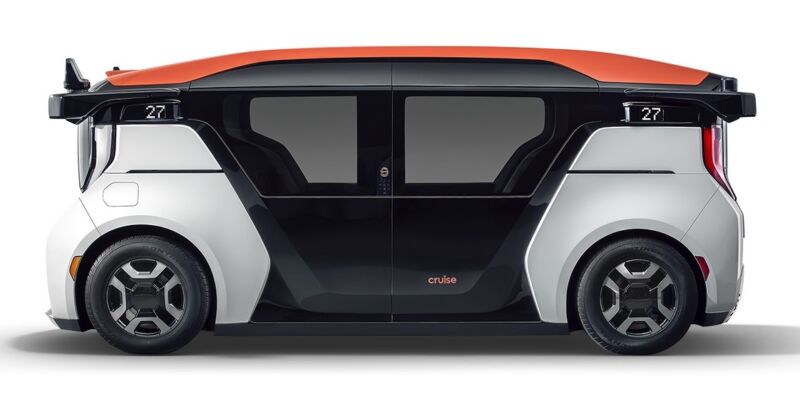
GM's Cruise subsidiary has petitioned the National Highway Traffic Safety Administration (NHTSA) for permission to put the driverless Cruise Origin into commercial service. Cruise announced the filing of its petition for approval on Friday, saying the car is "a zero-emission, shared, electric vehicle that has been purposefully designed from the ground up to operate without a human driver. This means it does not rely on certain human-centered features, like a steering wheel or a sun visor, to operate safely."
Cruise said its petition, filed together with parent company GM, "demonstrates how the Origin achieves safety objectives of existing standards and helps enable future AV [autonomous vehicle] regulations." The vehicles will be manufactured at GM's " Factory ZERO " in Michigan, Cruise's announcement said. "Production is expected to begin in late 2022 in Detroit at a GM factory with vehicles delivered in 2023, Cruise said Friday," according to Reuters .
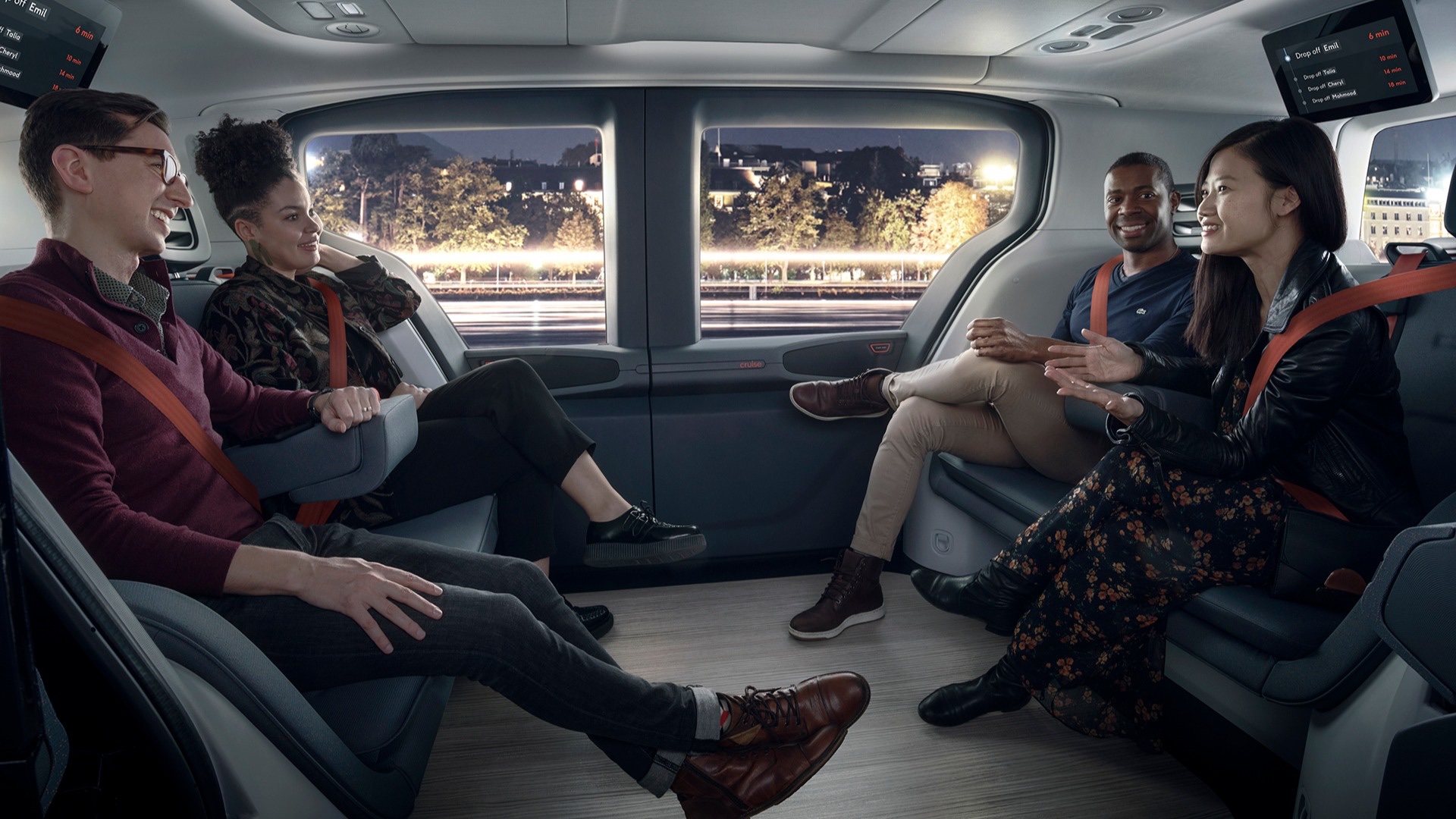
US law allows companies to seek temporary exemptions from safety rules to deploy up to 2,500 vehicles. GM previously sought an exemption for an earlier design based on the Chevy Bolt; the NHTSA took public comment on the request for an exemption in early 2019, and GM withdrew the petition in 2020.
Cruise argued that driverless taxi service using the Origin will benefit people who cannot drive or who don't have easy access to transportation. "The Origin will help expand mobility options for seniors, people who are blind or have low vision, and other communities that have traditionally faced barriers in access to reliable transportation," the company said.
Cruise taking sign-ups in San Francisco
Three weeks ago, Cruise started taking sign-ups for people who want to take a ride in a driverless car in San Francisco. That limited deployment was authorized by California's Department of Motor Vehicles . It uses the self-driving car based on the Chevy Bolt, as the Cruise Origin hasn't been deployed yet.
Alphabet's Waymo division began providing its self-driving ride-hailing service in San Francisco in August 2021 . Waymo was already offering the service in the suburbs of Phoenix, Arizona . Several other companies are planning driverless cars as well.
GM is the majority owner of Cruise, which also has investments from SoftBank , Honda , Microsoft , and Walmart . Here's another view of the Cruise Origin from Friday's announcement:
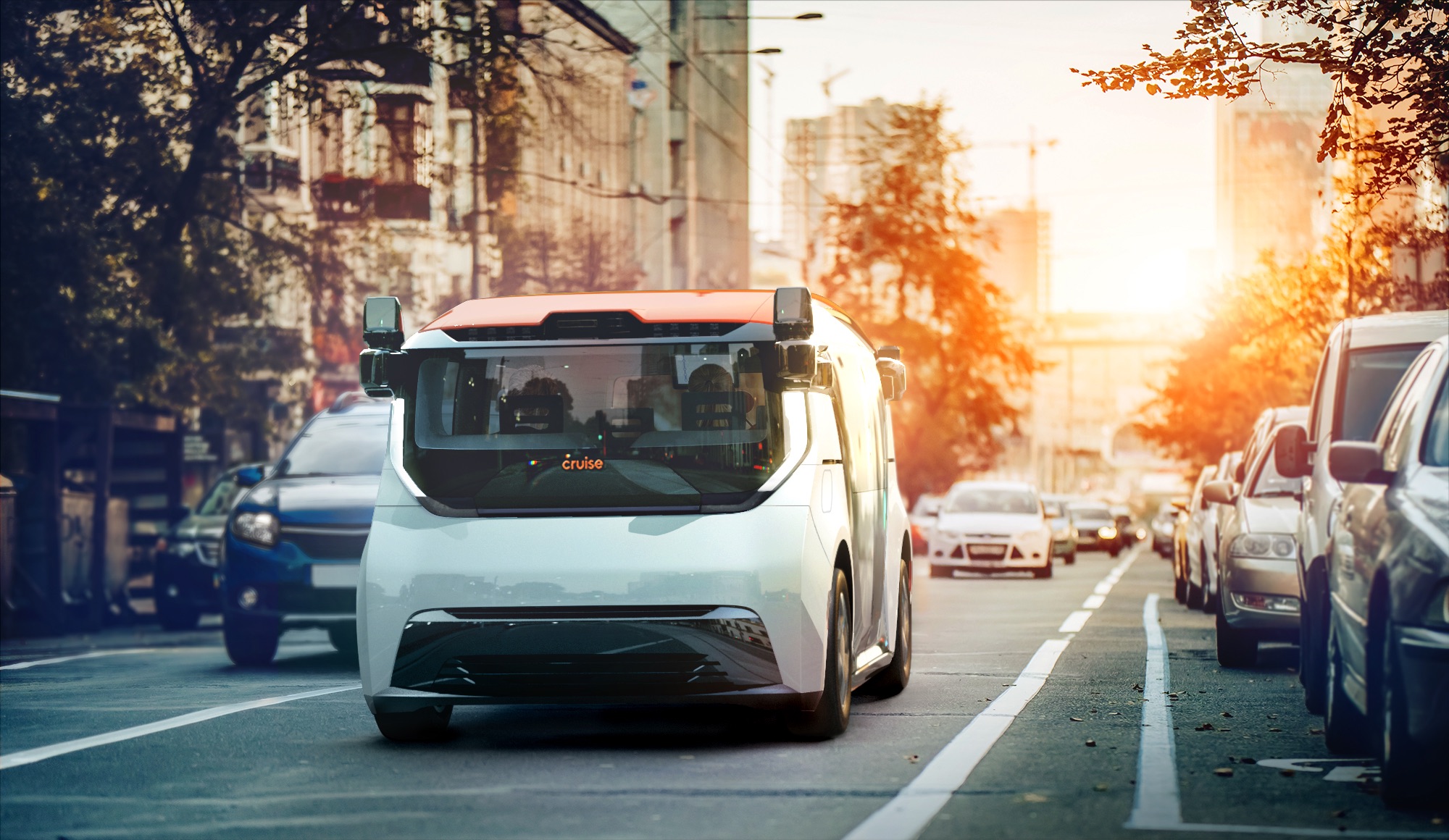
reader comments
Channel ars technica.
Cruise Origin launches the driverless future of electric mobility
During the launch of the Cruise Origin driverless car, GM’s Cruise declared driving as we know it—and ride-sharing as we know it—obsolete.
“This is the end of the human-driven, gasoline-powered single-occupant car, and the beginning of the future—the future beyond the car,” boomed a voice.
The Origin seats six adults and takes up about the same footprint as a full-size sedan, while its tall, 78-inch height is still able to get inside parking buildings. On the outside and on the inside it more closely resembles a luxurious train car than a motor vehicle. The smoothly sculpted exterior has sliding doors that open wide—rather than swinging out, which could injure bicycle and scooter riders—and the interior has two sets of three large seats with a vast expanse of legroom in between.
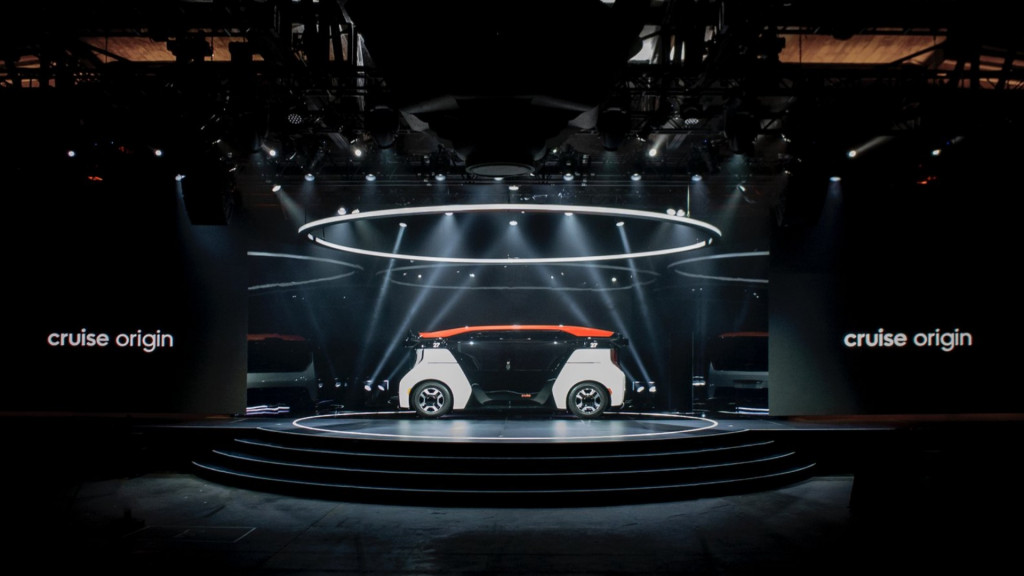
Cruise Origin driverless electric car intro - January 2020
It’s what the Origin doesn’t have that’s most noteworthy. It’s a departure from the traditional passenger-car template of the Chevy Bolt EV–based cars Cruise tests now . There’s no driver’s seat, no pedals or steering wheel, no gauges, and not even any windshield wipers or rearview mirrors. The only interface on the inside is a button you press when you’re ready to start the trip.
Cruise wants the Origin to provide the same consistent experience everywhere it’s offered —one that will be consistently better than human-driven ride-hailing.
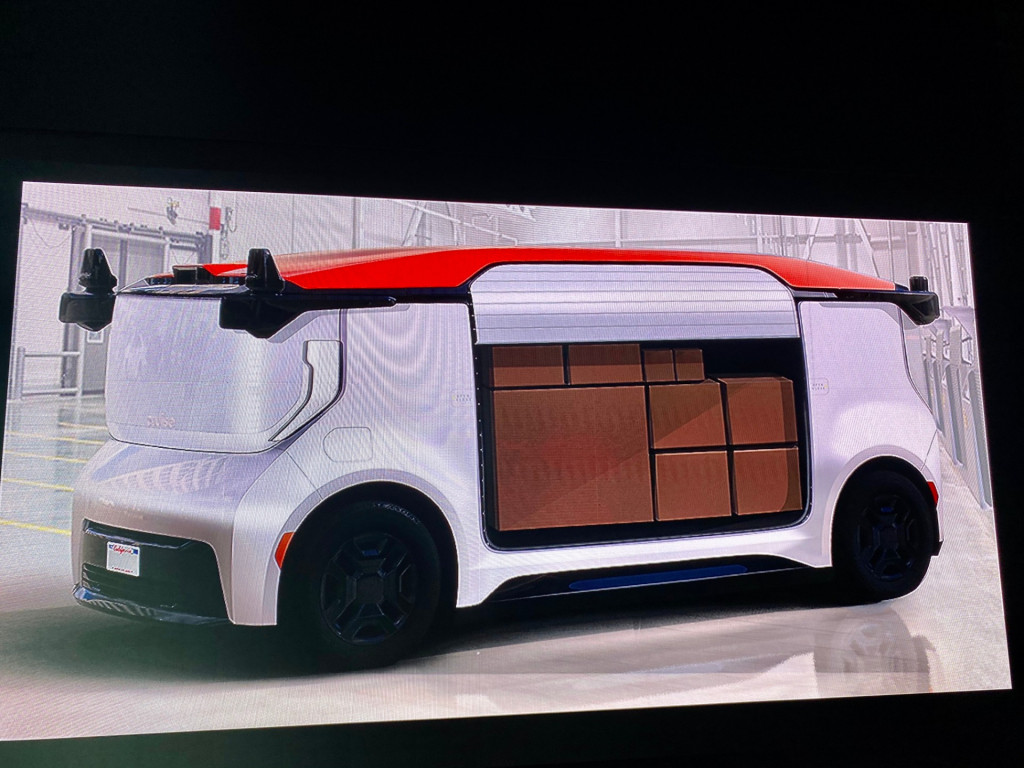
Cruise Origin driverless vehicle - cargo version
That experience won’t be offered for sale in any form—not even the cargo variant Cruise teased briefly. “It’s not a product you buy; it’s an experience you share,” said Cruise CEO Dan Ammann.
Cruise wasn’t yet ready to share information about that experience, which will likely be subscription- or membership-based and will aim initially for those who want more consistency versus ride-hailing apps—and an all-electric experience.
“When you use an old-school ride-share app, it’s kind of like rolling the dice," said Cruise Automation co-founder and CTO Kyle Vogt. “You never know what you’re going to get; you might get an awesome car with an awesome driver, or you might get a compact car that smells like Doritos and Mountain Dew.”
Vogt called ride-hailing “a stressful way to get around” and said that Cruise riders will get the same experience every time, whenever they want.
"Most of us are still burning up the atmosphere with gasoline-powered cars, because EVs aren’t yet affordable enough or convenient enough to make the switch,” Ammann said.
The Origin bypasses the anxiety of that switch. The electric vehicle has a propulsion system with “a pretty high level of sharing” with GM’s upcoming BEV3 vehicles —but with redundancies built into all critical components like steering and braking, it’s set up for being driverless at a true Level 5, with nobody on board needing to pay attention to the road ahead.
It does the calculations on trip length and range, and recharges when needed at a Cruise charging station.
Those smarts enable the Origin to gain a fiscal advantage over ride-hailing operations—with very high utilization. “The Origin is going to drive all day and all night; it costs a lot less to make than you’d expect (about half as much as a long-range EV); it’s going to last a million miles ; and you can share it,” Ammann explained, adding that it can save some people $5,000.
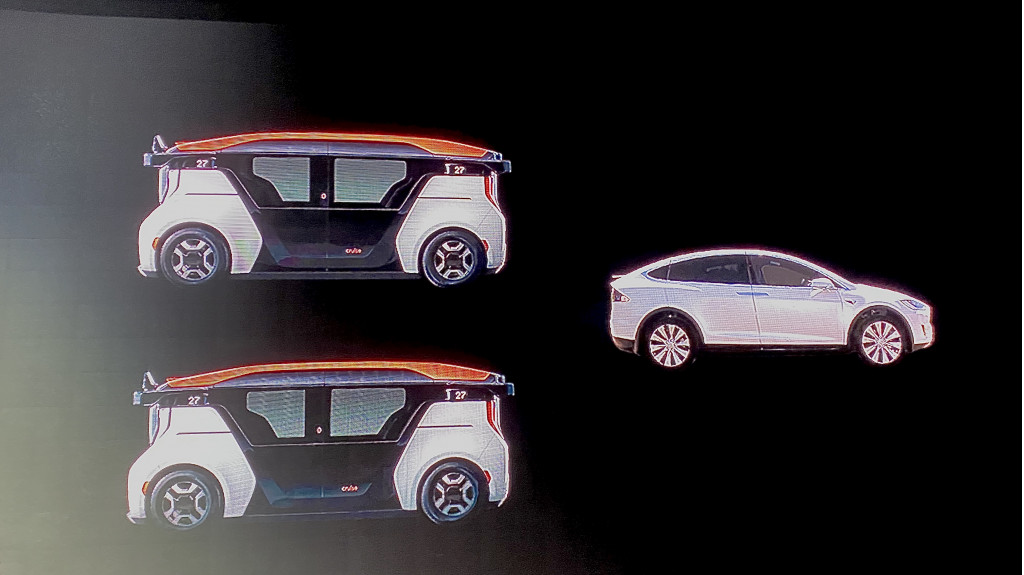
Cruise Origin driverless vehicle
Another thing that’s going to save Cruise money is that the body (mostly steel and aluminum) is designed to last many generations of sensor technology—so there’s no need to roll out a new fleet with each iteration.
Beyond saving money, that means fewer cars clogging up our roads, fewer cars piled into parking lots, and eventually fewer cars going into the scrap heap.
The Origin is roughly a year away from first testing on San Francisco streets—and it might get some testing in other closed environments before then—but the company’s current Gen 3 vehicles continue to gather data that will be used for smoother operation in them. It needs cell-tower connectivity most of the time, so the use target within a few years is essentially an airport shuttle or urban transportation, as they’re both models they could initially focus on for the most immediate return on investment.
Factors beyond Cruise’s control will affect how quickly that return happens. Ammann says that Cruise is working very closely with NHTSA and its recently revised framework for autonomous vehicles. And once it gets the vehicles out there, the days may be numbered for city driving as we know it.
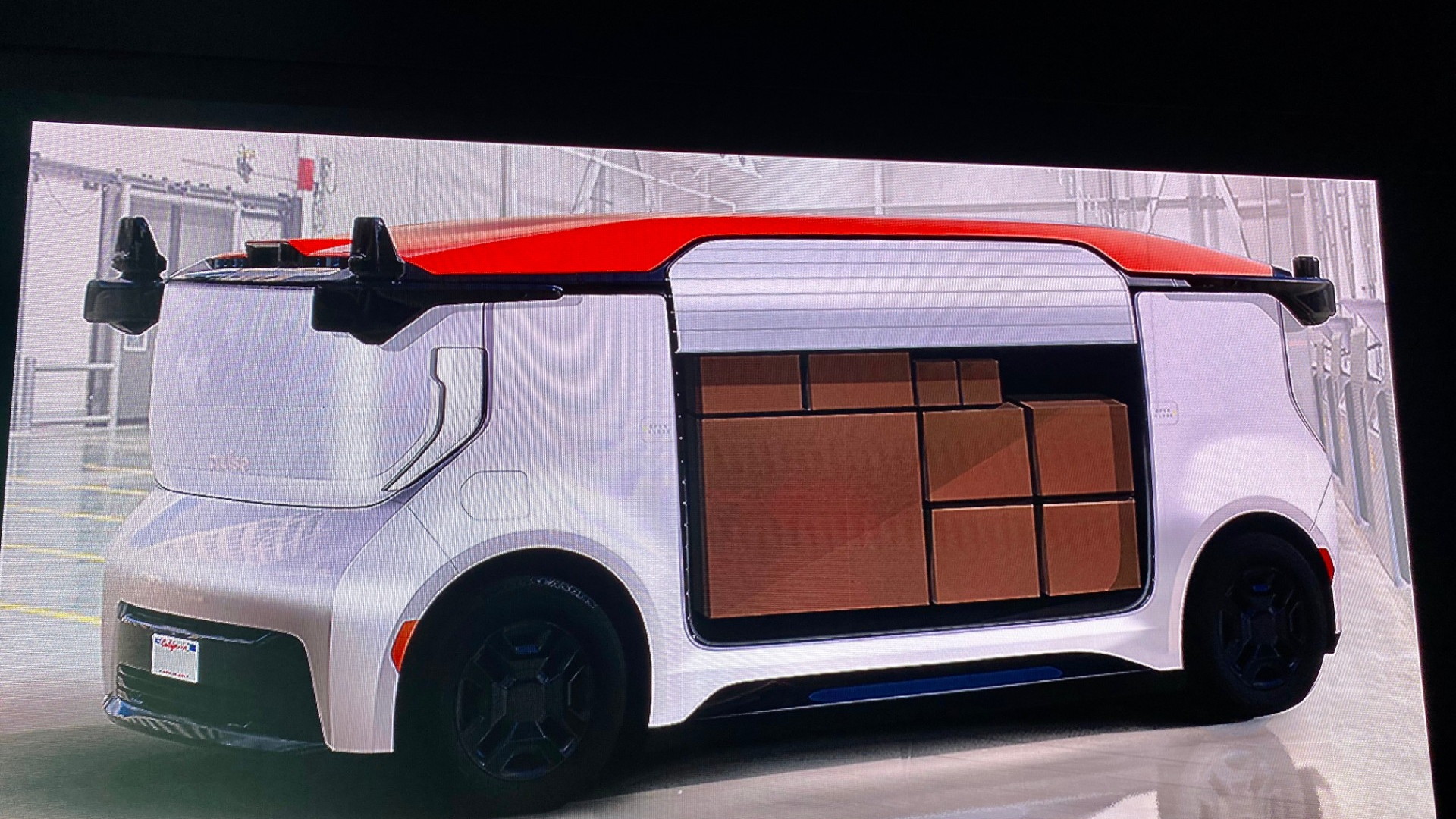
Contribute:
Additional resources, people who read this, also read:.
- Long-range Cadillac SUV to lead GM's next electric-car push, in 3 years
- Waymo's self-driving Jaguar I-Pace electric cars are ready for passengers
- Kia purpose-built EV will make global debut at CES
- Report: Cruise Origin electric self-driving shuttle will be made in Detroit
Share This Article:
Connect with the editor:.

Follow Us Today:
Green car reports newsletter.
Sign up to get the latest green car and environmental news, delivered to your inbox daily!
I agree to receive emails from Green Car Reports. I understand that I can unsubscribe at any time. Privacy Policy.

Lucid teased its midsize crossover SUV and said it will focus on efficiency and technology.
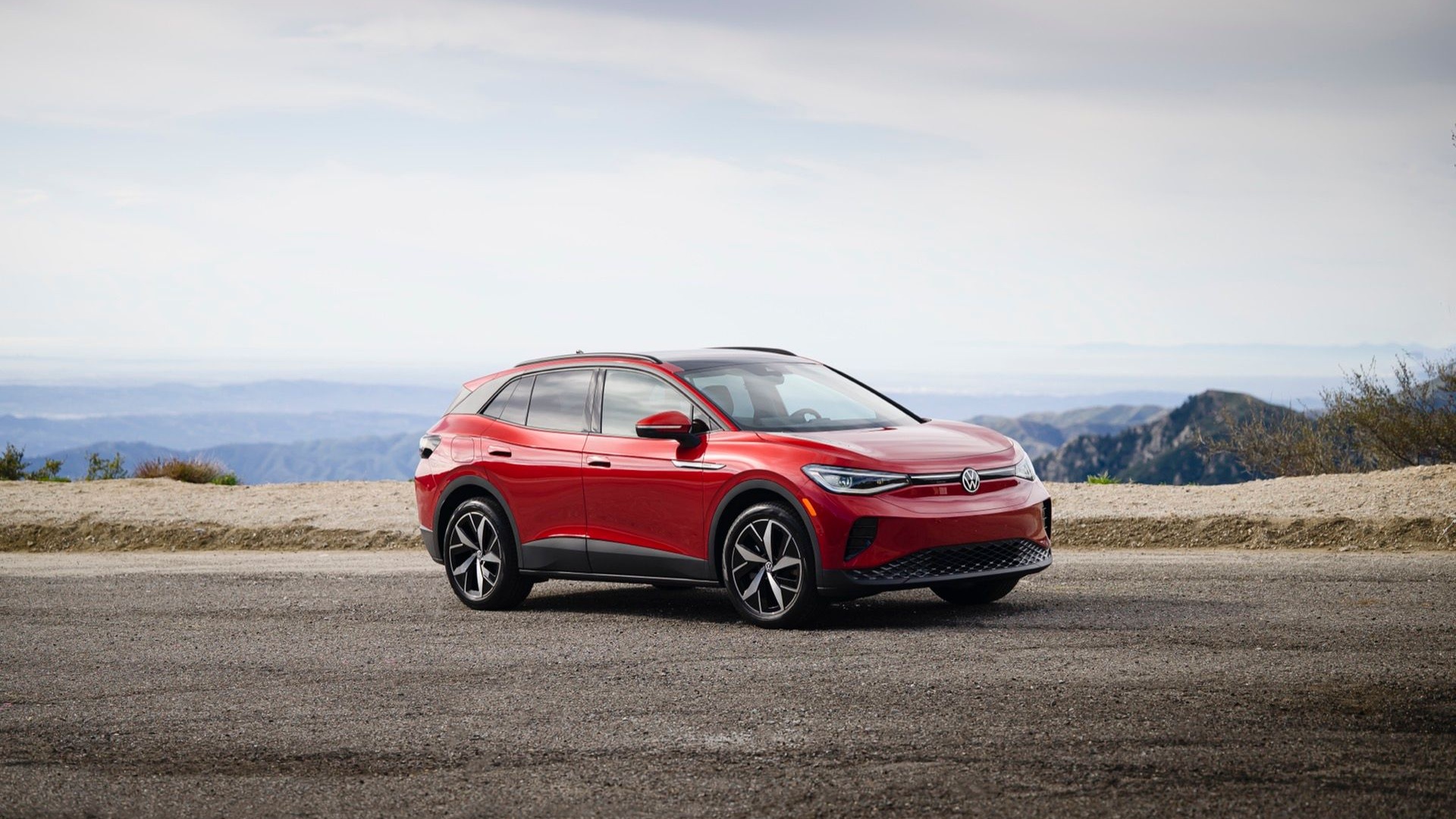
Volkswagen ID.4s have a potential issue with its door handles not keeping water out.

Tariffs on foreign EVs might drop for certain automakers in the EU.
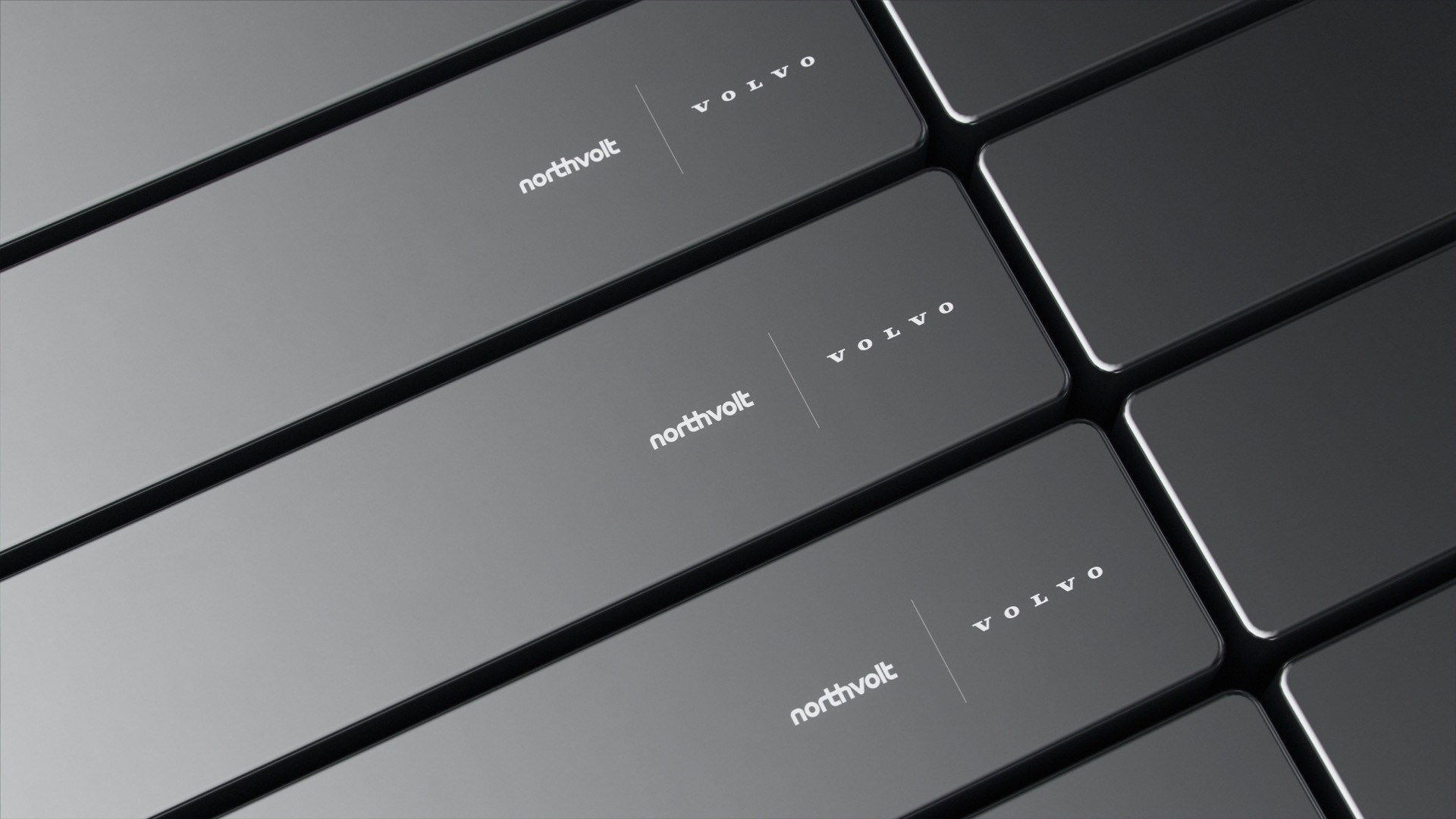
Company has suspended cathode active material production in Sweden and is working to cut costs, which would include job losses.
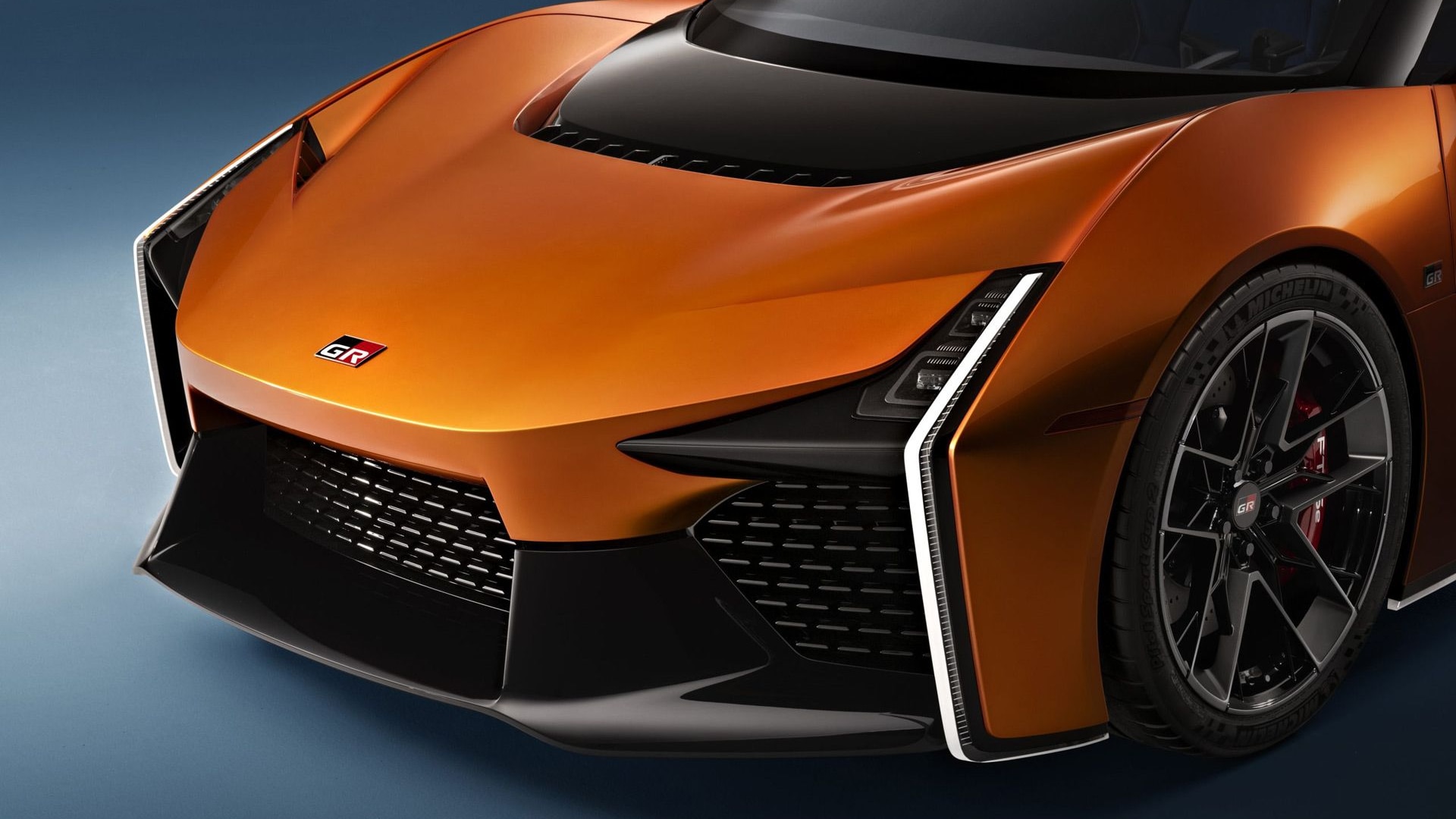
Toyota has pulled back somewhat from its 1.5M EV target for 2026, but the new target of 1M is ten times 2023 (and current) sales levels.

Hyundai gives its charge card to its wildest, most rebellious child–and it's a good idea.
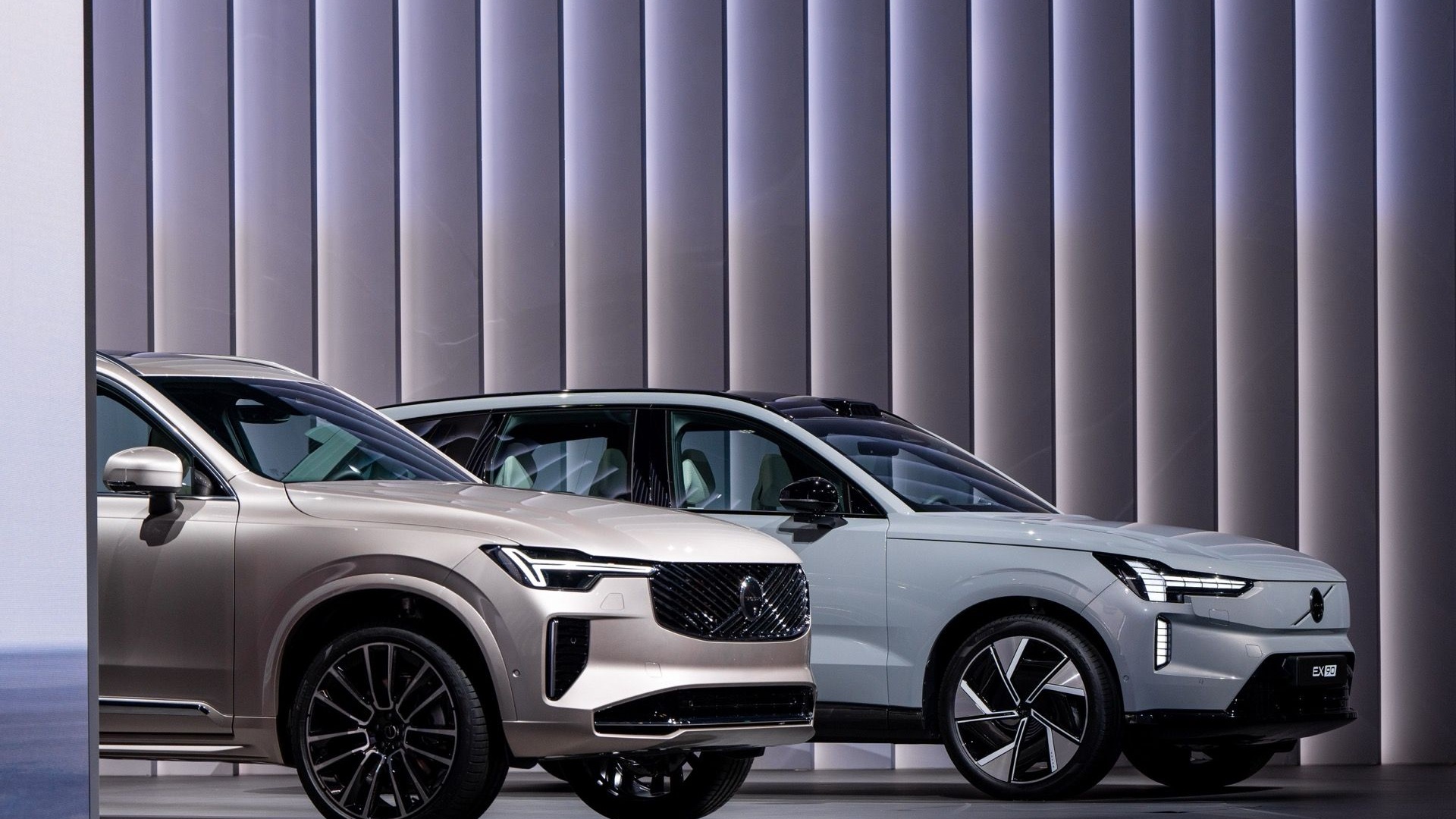
Plug-in hybrids are an important part of Volvo's electric future, and they'll evolve.
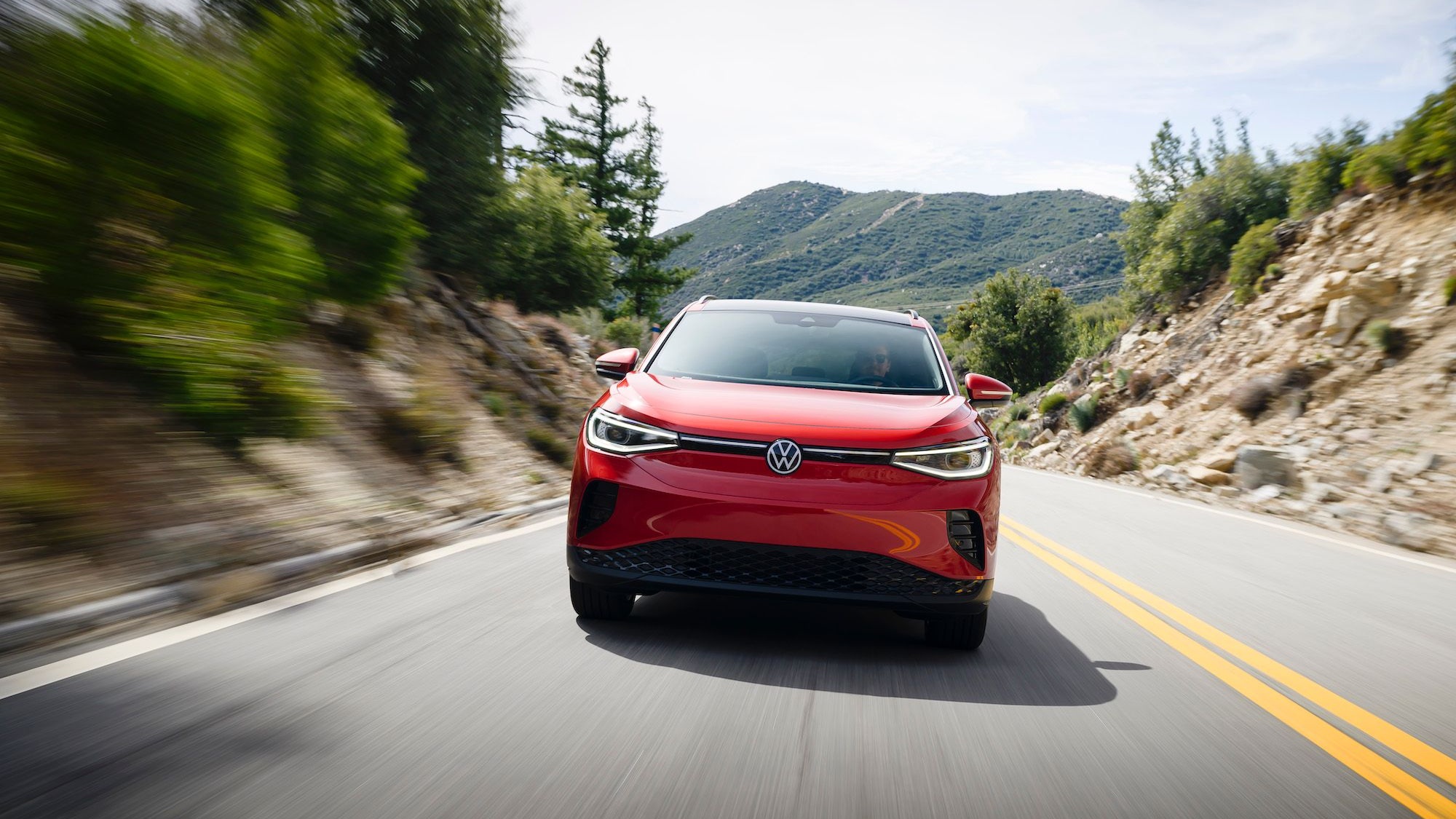
EVs produce less greenhouse gas emissions over their lifecycle than gas-powered vehicles, but SUVs are still worse for the environment than cars.

GM needs a way to ensure its future electric race cars can make it to the checkered flag—and it's developing a specific drive mode with range in mind.
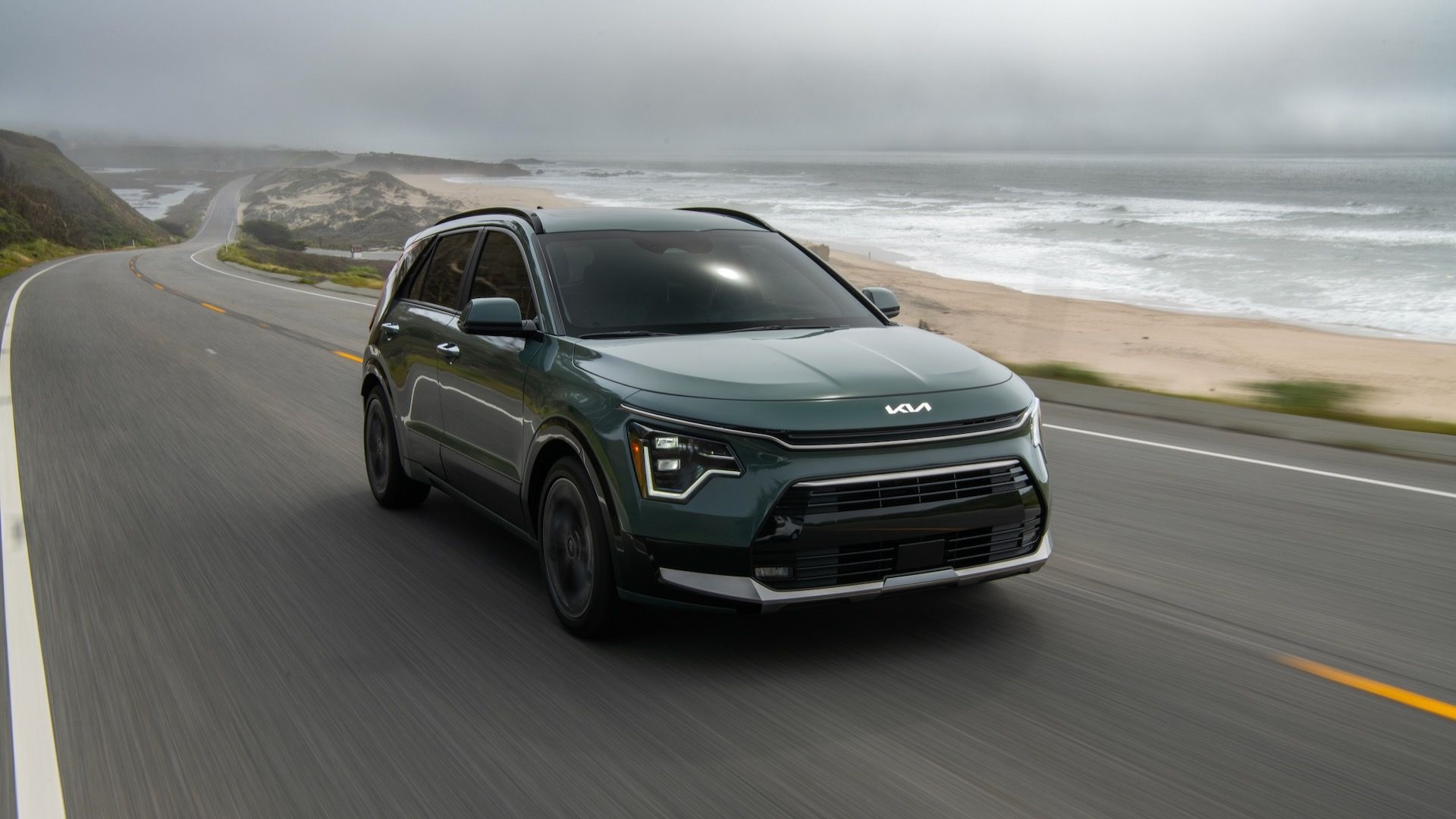
Kia Niro Electric remains in the family, while other models get slight price increases.
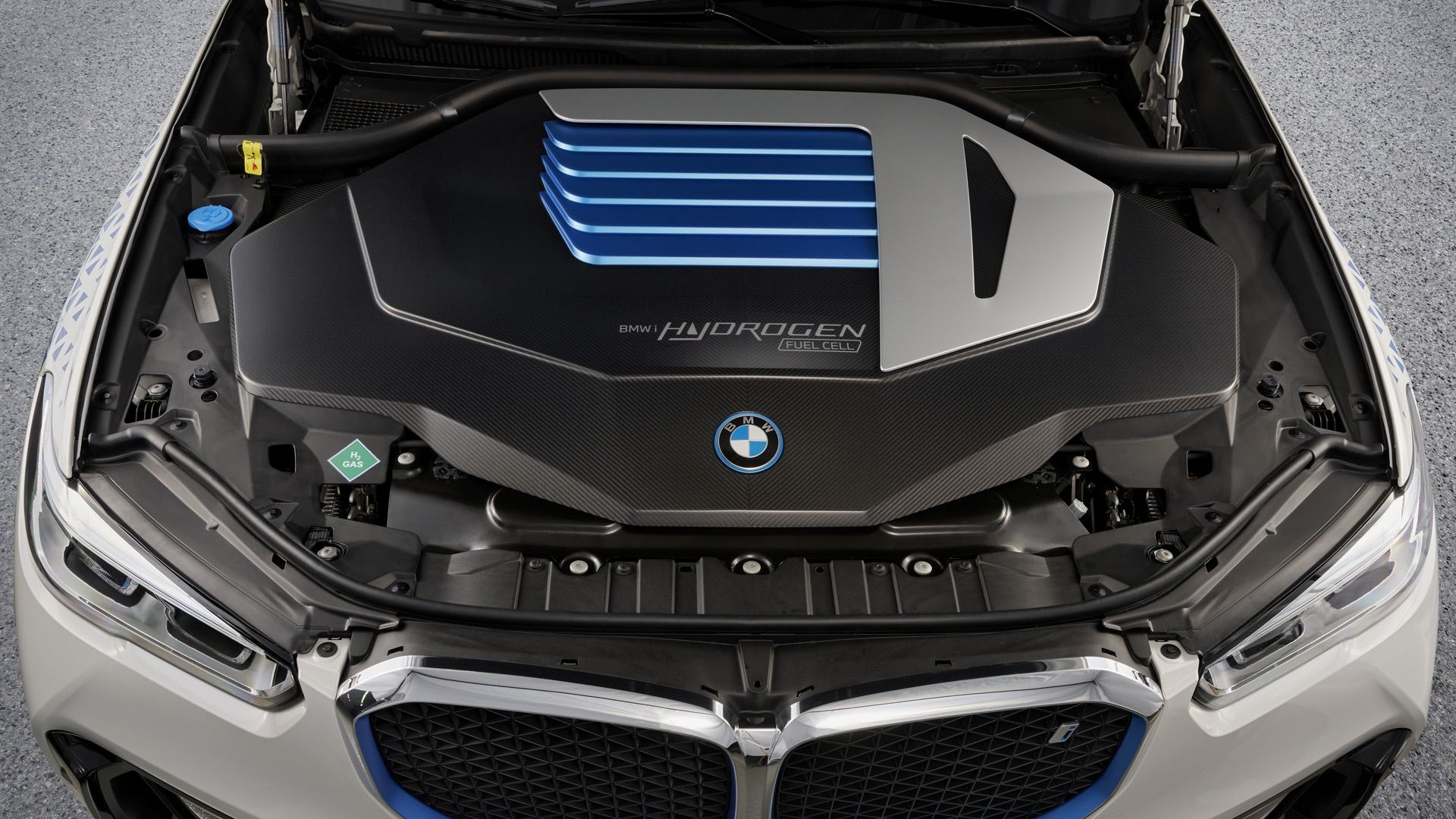
Automaker says it will introduce its first fuel-cell-powered vehicle in four years.
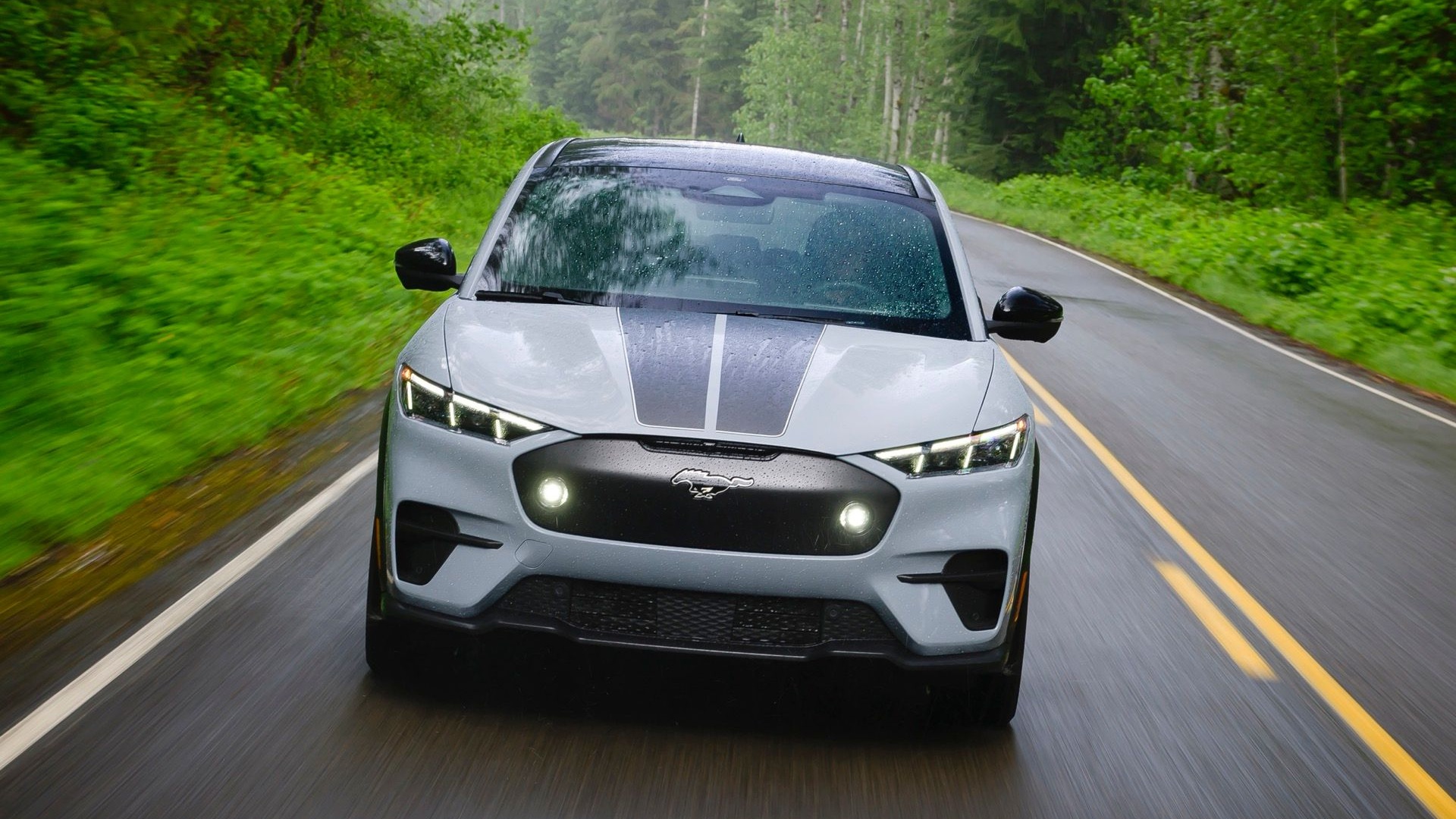
Over-the-road recharges could be the tech of the future—or a pipe dream.
- Never Miss a Green Car Reports Story I agree to receive emails from Green Car Reports. I understand that I can unsubscribe at any time. Privacy Policy. subscribe today
- NURBURGRING WEBCAMS
- WORK FOR US
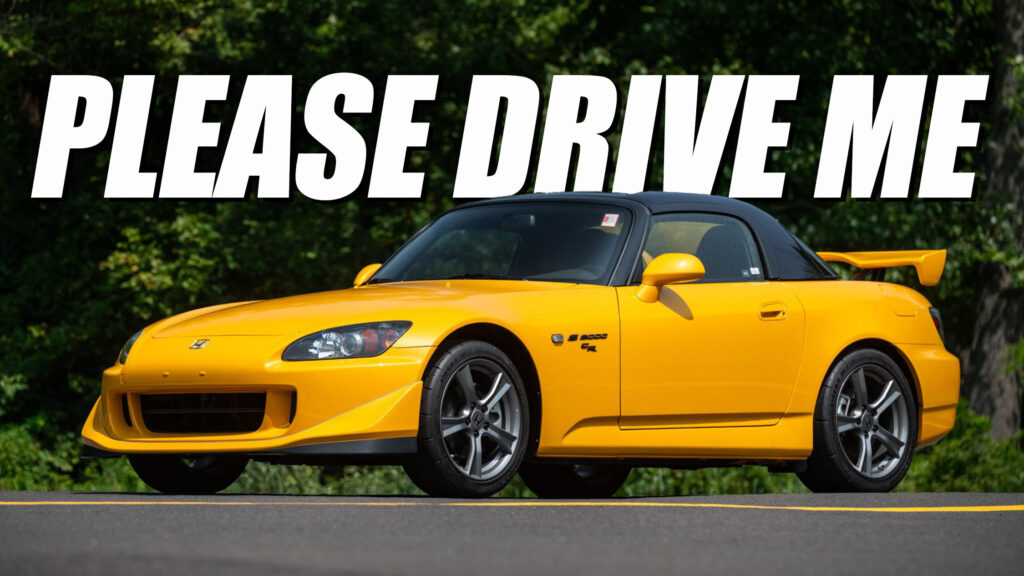
2022 Buyer Of $200K Honda S2000 CR Reselling It After Driving Just 7 Miles
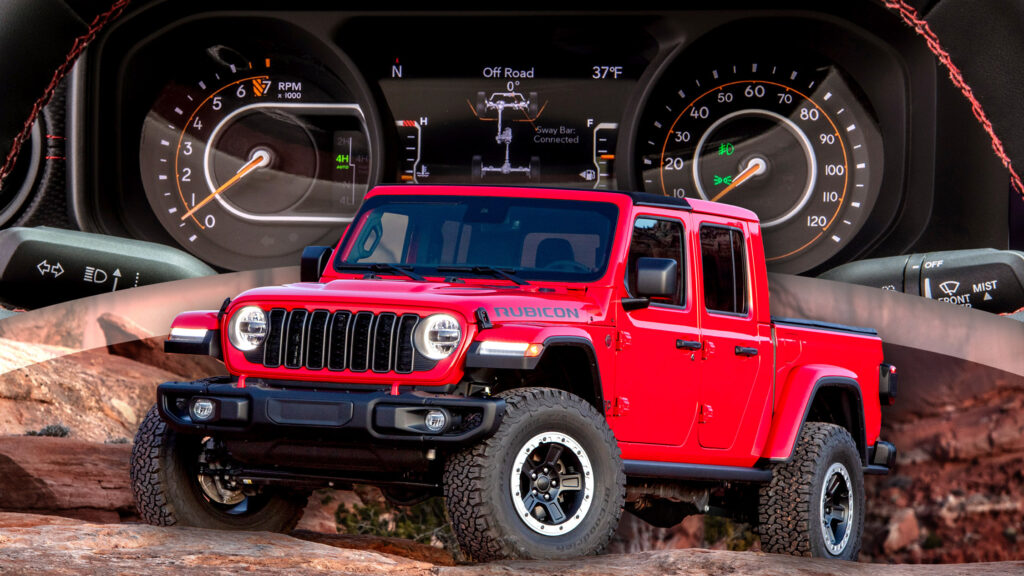
‘Nap Mode’ Feature? Jeep Recalls Gladiator and Wrangler Models Over Sudden Screen Death

Lucid Teases New Midsize EV That’s Big On Curves, Starting Under $50K
Editor's picks.

Ford Mustang Sales Skyrocket 54% In August As Camaro And Challenger Retire
Cruise Origin Goes Into Pre-Production, Nearly 100 Coming In “First Batch”
Tens of thousands of Origins will eventually be built at GM’s Factory Zero outside of Detroit

by Michael Gauthier
The Cruise Origin is inching closer to reality as CEO Dan Ammann has revealed he’s been spending time at GM’s Pre-Production Operations center, where a team has started building the “first batch” of nearly one hundred pre-production prototypes.
The models are set to undergo an intensive testing and validation process this summer, and they’ll eventually be built in the “tens of thousands” at GM’s Factory Zero outside of Detroit.
Ammann said it’s an “incredibly exciting time for Cruise” and seeing pre-production prototypes up close is “absolutely thrilling.” The executive went on to say, “While I’m incredibly proud of what we’ve accomplished to date, I’m very much humbled by the fact that we’re really just approaching the starting line of what will be the transportation transformation of the century.”
Also Read: The Cruise Origin Is The Electric, Autonomous, Shareable Car Of The Future
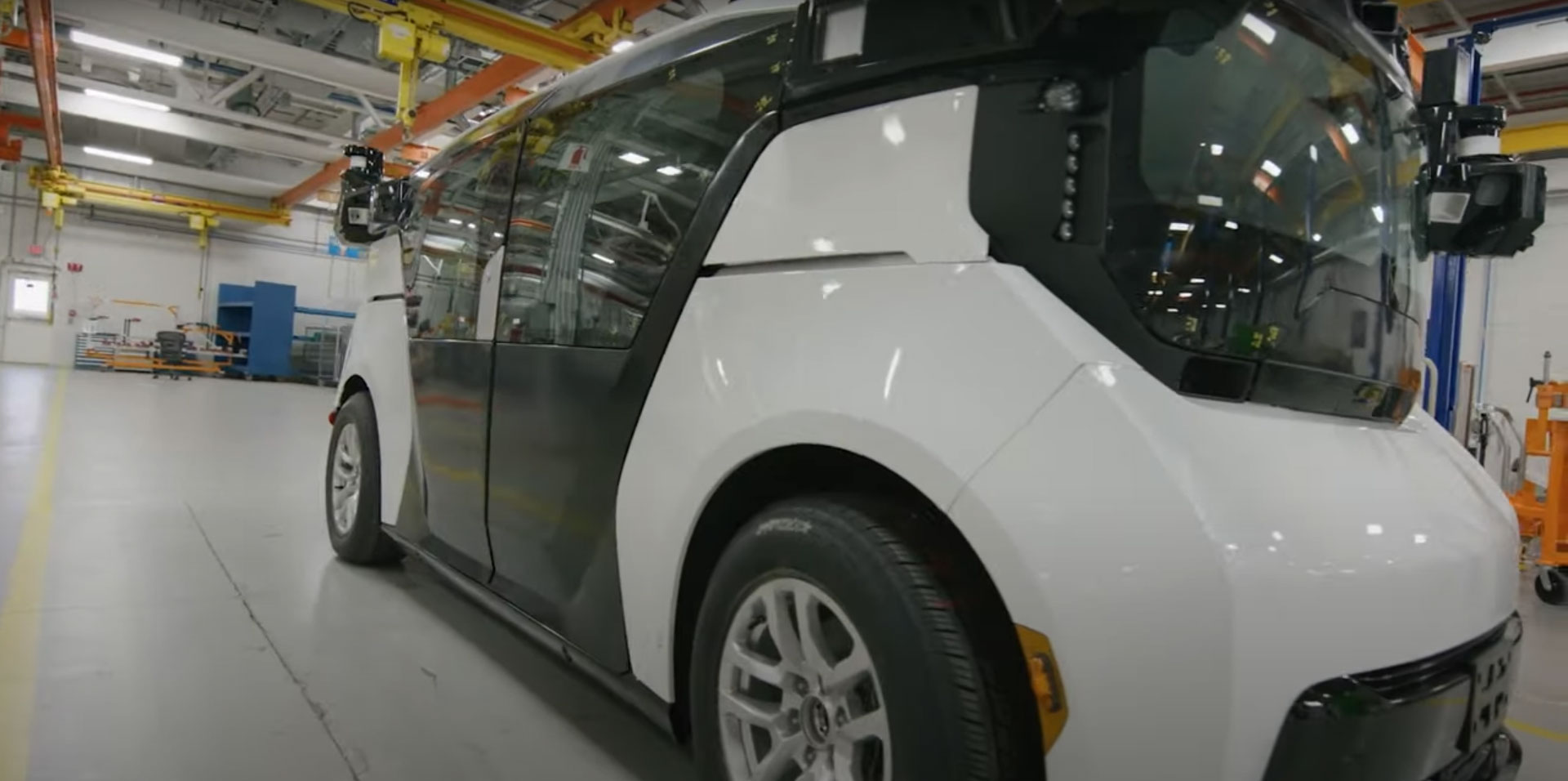
Besides revealing pre-production is underway, Ammann noted hundreds of engineers from General Motors, Honda and Cruise “haven’t skipped a beat” and have “kept the Origin program on time and on track for production,” despite the challenges caused by the coronavirus pandemic.
More importantly, the company announced a deal with GM Financial for a $5 (£3.5 / €4.1) billion line of credit so Cruise can “efficiently finance the expansion of our fleet as we scale up over the next few years.” Ammann said this bumps the company’s “war chest” to over $10 (£7.1 / €8.2) billion in total, which he says is necessary “when you think about what we’re building — safer, cleaner, and more accessible transportation for the world.”
As a refresher, the Cruise Origin is an autonomous shuttle that is designed to eliminate a number of problems related to traditional car ownership and ride-hailing services. It also aims to reduce congestion and pollution, while also being affordable enough that the “average San Franciscan household driving themselves or using ridesharing, will, on average, see up to $5,000 (£3,551 / €4,123) back in their pocket every year.”
Cruise hasn’t gone into many specifics, but the vehicle rides on GM’s Ultium platform and features a multi-layered sensor suite that is designed to track multiple people and objects. The vehicle is modular and upgradeable, and this means the Origin will improve over time. The model also boasts a lounge-like interior, which lacks a steering wheel and features two rows of seats that face each other.
- Restaurants
- Development
- The Way It Was
- Film & TV
- Things to Do
- Fitness & Wellness
- Hour Media Events
- Partner Events
- Photography Request Form
- Best of Detroit
- Excellence in Care
- Company Milestone Profiles
- Faces of Detroit
- Top Docs Event
- Give Detroit
- Great Places
- Canna-Business
- Women Who Move Detroit
- Parents’ Guide to College
- Professionals
- Other Publications
- Digital Edition
- Purchase Single Issues
- Newsletters
- Where to Find

How the Interior of Autonomous Vehicles Are Designed

D esigning the cabin of a fully autonomous vehicle poses a different challenge than a conventional car or truck interior. Think about it: With no driver, no steering wheel or pedals, and no need for awareness of what’s going on outside, its occupants will be able to sit wherever they want. But they’ll still need to buckle up for safety, and their seats will have to hold them in position for belts and airbags to be effective.
General Motors’ Cruise team has won production approval for its fully autonomous Origin vehicle, so we asked Stuart Norris, GM’s director of design for Advanced Mobility and Experience Studio, about what to expect inside an Origin.
“Developing the interior for the Origin has been a really interesting journey,” he says. “It’s a cool product for us since we’ve been used to designing interiors for personal vehicles, and getting our heads around the rational and emotional needs of customers using a shared autonomous vehicle took some work.”
A self-driving vehicle, Norris says, “throws out the typical constraints of needing to look forward and have control and being able to see signs and traffic lights and people on the side of the road. The vehicle is doing all of that for us.” So, GM pushed the seats out to a “campfire” position, the rears facing forward, the fronts facing rearward, “like you’re sitting around a campfire with a social space in between. That creates an environment where it’s easy to see and communicate with the other people when you don’t have to drive and think of safety and maneuverability of the vehicle.”
Because the electric-powered Origin will have no engine, transmission, or driveline, and its battery pack will hide under its flat floor, designers made it very spacious for leg-stretching room without the risk of bumping feet. Yet, Norris says, the Origin is small enough to be maneuverable and “somewhat cozy” inside. Large sliding doors on both sides provide huge openings for getting in and out, even for people in wheelchairs or with limited mobility, “and we worked very hard to make sure the step-in is low and the whole interior is smooth, clean, and open with no structural elements or trip hazards bulging up above the floor.”
And because the Origin is intended as a high-use passenger shuttle or ride-sharing vehicle that may be in almost nonstop service, designers used materials that create a warm, inviting environment yet will hold up to heavy wear and tear. “It has a residential furniture feel in the design and use of materials and colors,” Norris adds, “and overhead lighting gives both good task and good ambient lighting to create a nice, warm atmosphere.”
With typical airbag and seat-belt provisions, the Origin will be fully compliant with government safety requirements, and passengers will need to be seated and buckled in before it will drive away. Situational awareness screens will show you where you are, where you’re going, and your estimated time of arrival.
The cabin will seat up to six, but four or fewer can sit in the corners and swing large armrests down over the center seats to create comfy armchairs. The bad news is that the seats’ backrests are fixed for crash safety — they won’t recline. “But we did a lot of work to get to an optimum position for that backrest angle,” Norris says. “We had to balance the desire for reclining seats with the safety considerations and other needs for a shared vehicle.”
RELATED ARTICLES MORE FROM AUTHOR
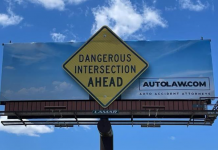
Top 20 Most Dangerous Intersections in Metro Detroit
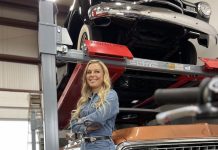
A Look Inside Cristy Lee’s New Metro Detroit Design Studio
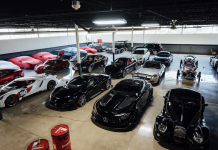
Lady Drivers: A Closer Look at the Auto Collections of Two Local Women
Newsletters.

FROM OUR PARTNERS

Embrace the Enchantment: Traverse City’s Must-Do Autumn Adventures

Summer ‘24 Bucket List: Traverse City Edition

6 Reasons Why You Book Your Next Event at...
- Terms & Conditions
- Privacy & Cookies Policy
- Hour Media Corporate
- Car Companies

- AutoPilot Tech
GM Cruise Unveils Self-Driving Autonomous Robotaxi

A new driverless shuttle vehicle by GM’s subsidiary Cruise made its debut at a San Francisco, California, event on January 21, 2020 named Origin. The all-electric ride-sharing vehicle is the result of a three-year collaboration between Cruise, GM, and Honda. Dan Ammann, Cruise’s CEO, estimates vehicles like Origin will last up to 1,000,000 miles, run day and night, and save the average San Franciscan up to $5,000 a year.
The Cruise Origin prototype and production vehicle Cruise’s black and orange shuttle service vehicle features a spacious gray interior with six passenger seats.

Two rows of three seats each face each other, similar to a commuter train car. Each Origin seat provides an airbag, extra legroom, and amenities, including device chargers, USB ports, and wireless internet. Overhead digital displays give passengers their ride details, and a camera on the interior roof monitors activity and analyzes rider feelings.
Technical and Environmental Features
The design and engineering teams made strategic decisions in producing the Origin. Producing it as an all-electric vehicle will result in cost savings for potential fleet owners and will give them environmentally friendly units. This rear-wheel-drive shuttle is made to run at highway speeds without a combustible engine or manual assistance.
There is no steering wheel, foot pedal, or other emergency control for humans to operate, but there is an SOS button. As a safety feature for bikers, the boxy vehicle features doors that slide open, minivan style, rather than hinged doors that swing open into traffic.
By removing the steering wheel, the rearview mirror, the pedals, and more, we’re left with something simple: space. pic.twitter.com/K3tS0QxuSC — Cruise (@Cruise) January 22, 2020
The vehicle is loaded with camera, radar and LiDAR sensors placed on the out edges to perceive the environment including a camera placed on a swivel that can rotate for better viewing angles.
While Ammann said Origin is ready for production, its present use will be limited to locations such as GM’s Michigan campuses and Honda facilities outside of the United States. The Cruise Origin must meet Federal Motor Vehicle Safety Standards (FMVSS), legal requirements for vehicle design, manufacture, safety, and performance before it can travel on public roads.
RELATED ARTICLES
Cars with autopilot in 2024, gm super cruise vs tesla autopilot, gm cruise raises additional $1.15b for self-driving robotaxis, most popular, tesla referral program code for free supercharging & more, tesla fsd v12.5.3 rolling out with actual smart summon, latest tesla autopilot software updates, tesla hardware 4 (ai4) – full details and latest news.
© AutoPilot Review
Take a closer look at the Cruise Origin — a fully self-driving vehicle manufactured by GM that doesn't have a steering wheel and would never need a human operator
- Self-driving startup Cruise revealed its fully-autonomous, all-electric vehicle this week in San Francisco. CEO Dan Ammann and CTO and cofounder Kyle Vogt were on hand to present the car, which is production-ready.
- The Origin has multiple sensor arrays, is designed to operate 24/7, and could last for 1 million miles. The design features multiple screens and a pair of facing bench seats, with seating for six and lots of legroom. It also has minivan-style sliding doors.
- The platform was developed by Cruise, GM, and Honda. Ammann said that the Origin is no concept vehicle — it's ready to be manufactured at a factory to be announced soon.
- Click here for more BI Prime stories .
Cruise took over some space in downtown San Francisco to showcase ...
... its Cruise Origin vehicle. The Origin is the fifth-generation Cruise ... er? It has no steering wheel, no pedals, and no need for a driver.
Cruise was acquired by GM in 2016 and in three years has made remarkable progress. The startup, now valued at close to $20 billion, brought the previous four versions of its self-driving car.
Each is based on an all-electric Chevy Bolt. Here's Gen 4 — named "Karl."
Former GM president Dan Ammann is now CEO of Cruise. He presided over the Origin's reveal.
Cofounder and CTO Kyle Vogt provided a walkaround, presented the Origin's tech, and gave a guided tour of the vehicle's interior. He also noted that the sliding doors are a potential boon for cyclists and pedestrians.
And quite the interior it is! Wired's Alex Davies (a former BI transportation editor) and I checked out the roomy-roomy-roominess, which reminded me of London black cabs and the old Checkers in New York.
There's a pair of bench seats that face each other. Seating is for six.
Dual screens provide an information interface. The Origin is built on a new electric platform, jointly developed by GM and Honda.
There's cargo space at the rear. And two of the four main sensor arrays. The vehicle has been designed to operate around the clock and last for a million miles.
The sensors are quite high-tech, enabling the Origin to approach what Vogt called "superhuman" performance.
The digital display can identify the Origin's fleet number.
Sensors enable the Origin to "see" in near total darkness.

Currently, Cruise is testing vehicles in the dense, urban environment of San Francisco. Vogt characterized it as entropic and random — good things if you're teaching self-driving cars to drive.
Cruise has grown A LOT since the GM acquisition.
Ammann took questions from the media. He said that using Cruise's ride-sharing service could save a typical San Franciscan $5,000 a year.
I wandered around the space. Cruise and Ammann have taken the position that the traditional car is finished.
And the signage at the event made that clear.
- Main content
HONDA The Power of Dreams .cls-1,.cls-2{stroke-width:0px;}.cls-2{fill:#c00;}
Cruise origin.

The Future Autonomous Driverless Ride Service
Honda developer ideas.

Living in the Future with Honda Mobility

The Cruise Origin, a self-driving vehicle with no steering wheel or pedals, purpose built for a driverless ridehail service, represents the unprecedented mobility of the future. Since the interior space of this vehicle with seating for six passengers facing each other can be completely private, the users can use their travel time more freely, such as holding a meeting or having a fun time with the family without worrying about other people around them. This vehicle will indeed let us transcend the constraints of time. The goal is to offer both a sense of reassurance and comfort that public transportation offers and a private space that a personally-owned vehicle provides. Driverless ridehail service is sure to become a completely new mobility option for more people. Honda will realize greater freedom and accessibility to mobility and bring about fun and convenient mobility experiences.
See This Mobility on Display Here

This is one of Honda’s dreams. What is your dream?
Experience Honda DREAM LOOP AI
Related Links
Honda Booth Map
Cruise unveils Origin, an electric driverless vehicle designed for sharing

Cruise unveiled Tuesday evening a “production ready” driverless vehicle called Origin, the product of a multi-year collaboration with parent company GM and investor Honda that is designed for a ridesharing service.
The shuttle-like vehicle — branded with Cruise’s trademark orange and black colors — has no steering wheel or pedals and is designed to travel at highway speeds. The interior is roomy, with seats that face each other, similar to what a traveler might find on some trains. Each seat is meant to accommodate the needs of an individual, with personal USB ports, CTO and co-founder Kyle Vogt noted during the presentation. Digital displays are located above, presumably to give travelers information about their rides.
The doors don’t hinge outward, Vogt added. Instead, he said, “they slide open, so bikers are safer.”
Splashy looks aside, the Origin is meant to show Cruise’s muscle and intent to deploy an autonomous ridesharing service at scale. When and how that will happen are the important questions left unanswered.
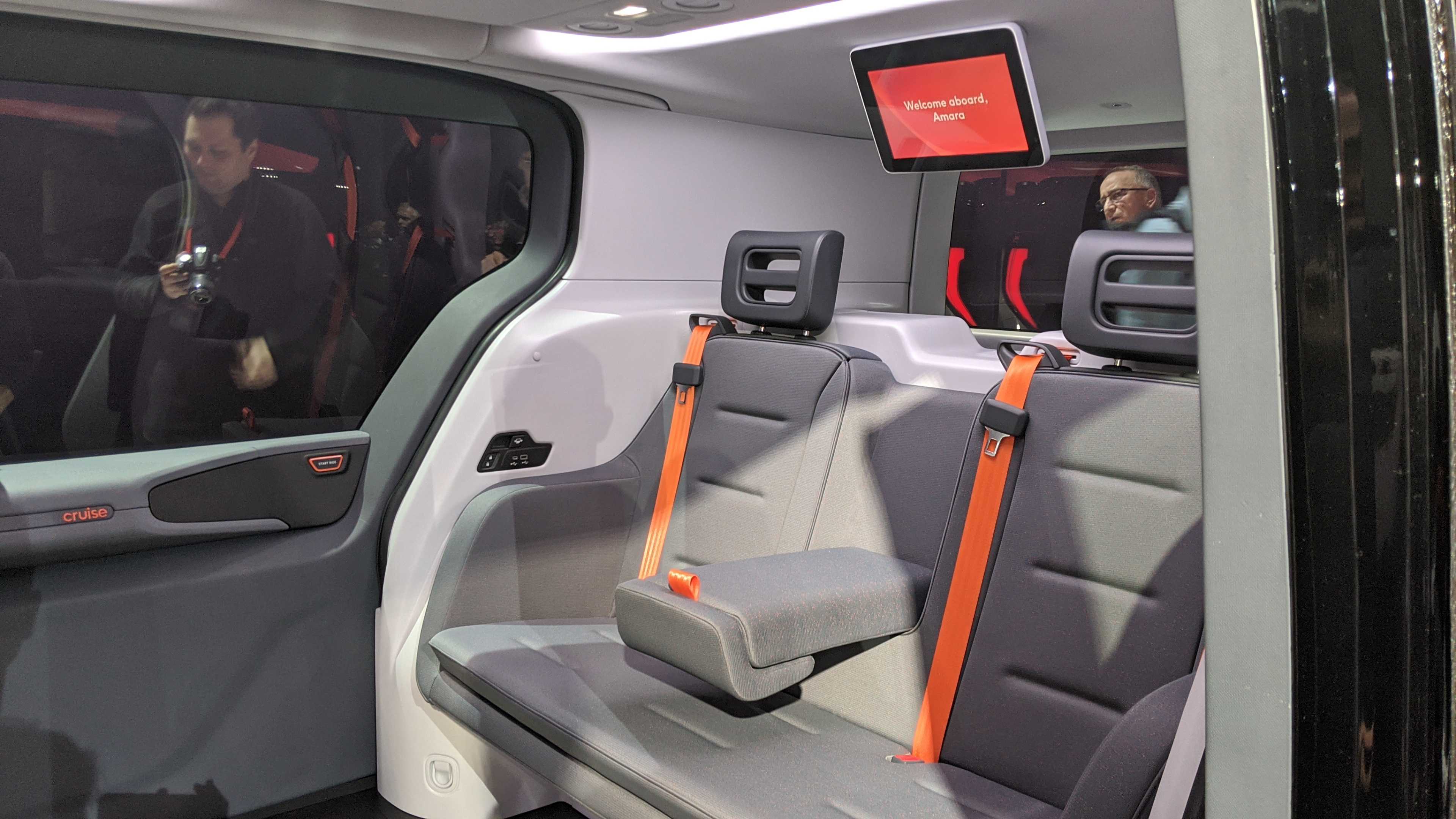
CEO Dan Ammann stressed that the vehicle is not a concept, but instead is a production vehicle that the company intends to use for a ridesharing service.
However, don’t expect the Origin to be on public roads anytime soon. The driverless vehicle doesn’t meet U.S. federal regulations known as FMVSS, which specify design, construction, performance and durability requirements for motor vehicles.
For now, the Origin will be used on private, closed environments such as GM facilities in Michigan or even Honda’s campus outside of the U.S., Ammann said in an interview after the presentation.
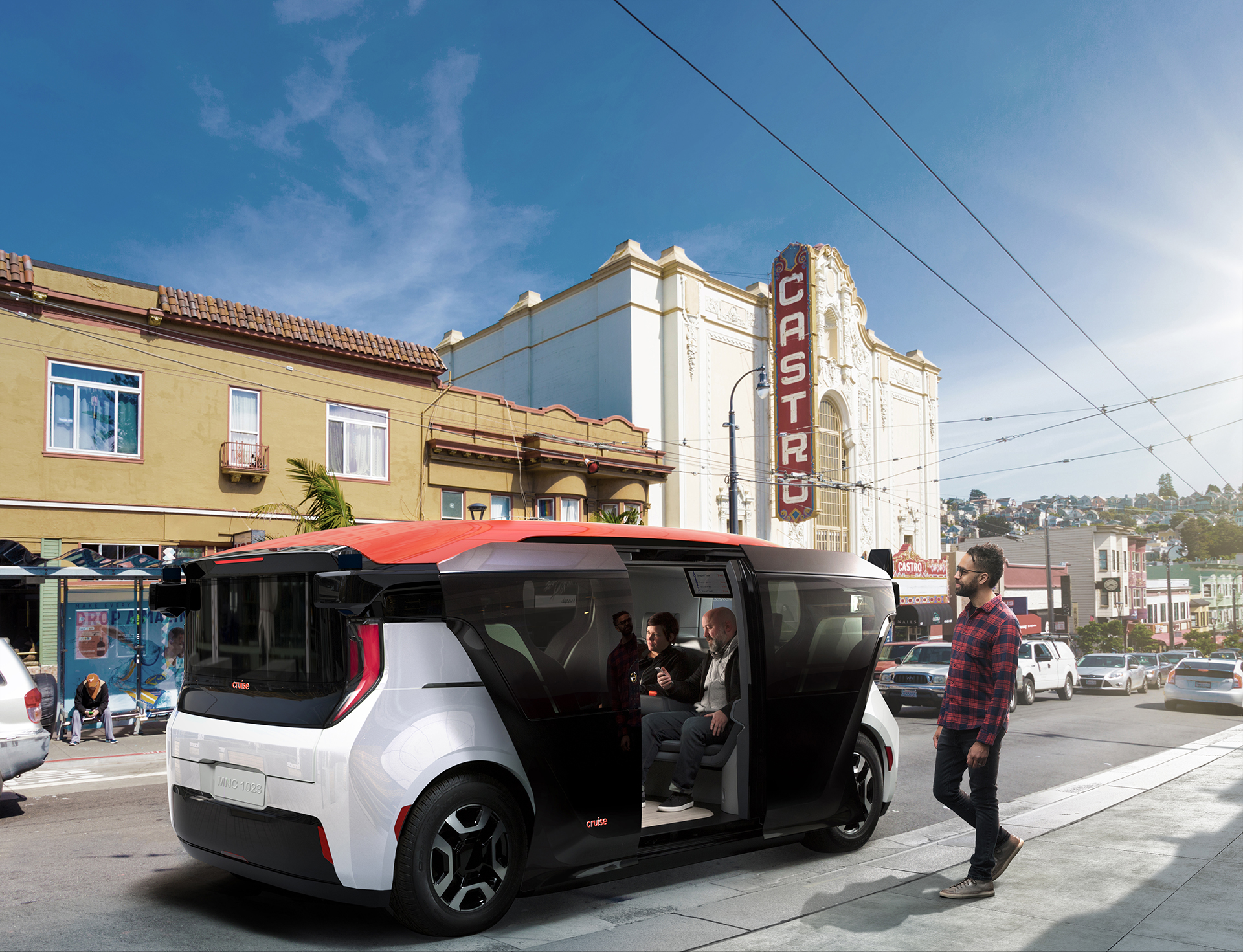
Ammann also emphasized the low cost of the vehicle, which he added is designed to operate 1 million miles.
“W e’ve been just as obsessed with making the O rigin experience as inexpensive as possible,” Ammann said while onstage. “ Because if we’re really serious about improving life, and our cities, we need huge numbers of people to use the C ruise origin. And that won’t happen unless we deliver on a very simple proposition, a better experience at a lower price than what you pay to get around today.”
GM will manufacture the vehicle, although Ammann wouldn’t provide more details on where except to say “you’ll find out in a couple of days.” He did say that the vehicle will be produced “for roughly half the cost of what a conventional electric SUV costs today.”
The reveal offered more clues about Cruise’s hardware development, which has been growing in the past 18 months under the leadership of its vice president of hardware, Carl Jenkins and Brendan Hermalyn, director of autonomous hardware systems.
The vehicle is outfitted with what Vogt called an “owl,” a hybrid sensor assembly that seems to combine camera and radar. The team responsible for developing the “owl” was at the event, and seen posing for photos long after the presentation had ended and most revelers had left.
More TechCrunch
Get the industry’s biggest tech news, techcrunch daily news.
Every weekday and Sunday, you can get the best of TechCrunch’s coverage.
Startups Weekly
Startups are the core of TechCrunch, so get our best coverage delivered weekly.
TechCrunch Fintech
The latest Fintech news and analysis, delivered every Tuesday.
TechCrunch Mobility
TechCrunch Mobility is your destination for transportation news and insight.
Neurode wants to treat and track ADHD symptoms through a wearable headband
Sydney-based Neurode has come up with a novel way to offer some relief to people with ADHD: a wearable headband that can track and treat ADHD symptoms. And you only…

Bumble to leverage AI to help users with profile creation and conversations
Bumble is increasing its investments in AI and branching out with new features to stay relevant amid a generational shift in dating behavior among younger users. During Goldman Sachs’ annual technology…

The real power of Apple Intelligence will show up in third-party apps
Apple Intelligence, the iPhone maker’s new set of AI capabilities arriving in iOS 18, is laying the groundwork for a new way to use apps. Today, the dated App Store…

SpaceX calls out ‘superfluous’ regulatory delays holding up Starship flights
SpaceX has launched its most public and aggressive offensive against regulators to date, with a blog post published Tuesday urging more expeditious launch licensing — lest the country lose its…

What is Bluesky? Everything to know about the app trying to replace Twitter
Is the grass greener on the other side? We’re not sure, but the sky is most certainly bluer. It’s been almost two years since Elon Musk purchased Twitter, now X,…

Apple Watch blood oxygen detection won’t be available on the Series 10 in the U.S.
Apple has not discussed whether the feature’s removal was a hardware change on the Series 10 or if it was simply disabled via the software, like with the Series 9.

Drybaby is a dating app for the ‘sober curious’ movement
Drybaby is the newest dating app designed for singles who are sober or interested in reducing their alcohol consumption. The app arrives as 41% of Americans are cutting back on…

Google Gemini: Everything you need to know about the generative AI models
Gemini is Google’s long-promised, next-gen generative AI model family.

London’s transit agency drops claim it has ‘no evidence’ of customer data theft after hack
The London transport authority removes a claim that said there was no evidence that customer data was compromised during a recent hack.

Here’s how the new AirPods Pro hearing test works
Hearing Test will be built into iOS 18, though Apple is currently awaiting FDA approval for both it and the newly announced hearing aid feature before launch.

Featured Article
iPhone 16, Apple Intelligence, AirPods 4 and more: Everything revealed at Apple Event 2024
Apple’s lineup of announcements echoed many of the anticipated hardware reveals, including the new iPhone 16, AirPods 4, the Apple Watch Series 10 and more.

Apple punts on AI
One would have expected that “Apple’s first phone made from the ground up for Apple Intelligence” would justify being so.

Finally, a bunch of SMB-focused fintechs get investor love while M&A activity heats up
Welcome to TechCrunch Fintech! It’s finally cooling down here in my home base of Austin, Texas, and that makes me happy. In this week’s newsletter, we’re looking at a big…

Huawei’s $2,800 triple-screen phone laughs at your puny foldable
The Mate XT Ultimate Design costs roughly $2,800 and is only available in China for now.

French embedded insurance startup Neat secures $55 million
Neat helps other companies sell insurance products to their own customers. In insurance lingo, it focuses on affinity insurance contracts linked to another service or product.

EV warranty startup Amber launches a remote diagnostic service for Teslas
EV warranty startup Amber is expanding nationwide, bringing on new vehicles and offering a new remote diagnostic scan — all signs that the one-year-old company is putting its recent $3.18…

SpaceX launches Polaris Dawn, where astronauts will venture farther than any humans in more than 50 years
A SpaceX Falcon 9 lifted off in the early hours of Tuesday morning carrying a crew that will attempt the first commercial spacewalk and travel higher than any crewed mission…

Amazon trials last-mile deliveries by tram in Frankfurt
Amazon has announced a new pilot package delivery service in Frankfurt, Germany, that meshes electric road and rail transport. The e-commerce giant will use vans from its delivery depot to…

Apple partners with third parties, like Google, on iPhone 16’s visual search
Apple’s relationship with Google as its search partner is taking a new turn with Apple’s introduction of visual search, or “Visual Intelligence,” as the iPhone maker dubbed it Monday during…

Creator startup Spotter raises another $7.4M
Spotter, a startup that underwrites creators and offers AI tools, raised $7.4 million, according to a Form D filing viewed by TechCrunch. A representative for Spotter confirmed the filing’s legitimacy,…

Spare fixes cities’ outdated transport services for disabled residents
Cities spend hundreds of millions each year on paratransit services, or public rides for disabled residents, yet those services remain limited and unpredictable. Wheelchair users often face late pickups, hindering…

Lucid Motors’ Gravity SUV will have Tesla charging built in
Lucid Motors is just a few months away from finally launching its electric SUV, and the company now says the upcoming vehicle — dubbed Gravity — will have Tesla’s North…

MariaDB goes private with new CEO as K1 closes acquisition
MariaDB‘s short-lived tenure as a public company is all but over, as the struggling database business is now fully under the auspices of K1 Investment Management. MariaDB also announced a…

JFrog deepens its partnership with GitHub, launches runtime security service
In addition, JFrog is launching a runtime security solution, as well as an integration with Nvidia’s NIM microservices.

Qualifyze swallows $54M to improve pharmaceutical supply chains
In the world of pharmaceuticals, companies aim to operate under GMP guidelines — a set of production and manufacturing measures to assure standards for medicinal products. But too often, the…

StackGen raises $12.3M for its infrastructure-from-code service
In addition to the code, StackGen also visualizes what the new infrastructure will look like, and users can drag and drop additional resources in this interfaces as needed.

Inversion Space accelerates orbital reentry vehicle tech with $71M Space Force contract
Goods are shipped around the world via roads, rail, and air. Why not space, too? That’s the question posed by Inversion Space, a Los Angeles-based startup that’s developing a reentry…

Hardware companies dominate a list of promising climate tech startups
A new report from Congruent Ventures and SVB highlights startups that could significantly reduce carbon emissions, mitigating climate change.

Smartcat secures $43M for its AI-powered translation platform
Smartcat, founded in 2016, is among the vendors providing automated translation tools geared toward enterprises, and its co-founder and CEO, Ivan Smolnikov, says business is good.

Form3, a quiet giant in UK fintech, raises $60M at a $570M valuation
Form3, a startup building tools to connect financial players with each other to enable account payments, has it raised $60 million to continue expanding its business.


GM’s Cruise is giving up on self-driving cars without steering wheels
General Motors is throwing in the towel on its bespoke autonomous vehicle that doesn’t have a steering wheel called Origin . Instead, its Cruise self-driving unit is turning its focus to development efforts on the next-generation Chevy Bolt.
Back in 2022, General Motors filed a petition with the National Highway Traffic Safety Administration in an effort to unleash 2,500 self-driving Origin vehicles (which have no human controls like brake pedals or a steering wheel ) annually. To this day, NHTSA hasn’t done anything with this request , according to Reuters . Now, the Origin – with its subway-like doors and campfire seating – is on hold indefinitely, and there’s no word if GM will try to get it going in the future.
Here’s what a spokesperson for General Motors told Reuters :
“GM and Cruise are optimizing resources to focus development of our next autonomous vehicle on the next-generation Bolt instead of the Origin,” a GM spokesperson said. “This shift creates a more cost-effective and scalable option for pursuing an autonomous future faster, while avoiding the uncertain path to regulatory compliance in the U.S. that could impede scaling of the Origin.”
In November of last year, GM said it would temporarily halt the production of the Cruise Origin after hundreds of ships had already been built. That was apparently “more than enough for the near-term when we are ready to ramp things back up,” according to a spokesperson. Apparently, it was way more than enough. This decision to pause Cruise production at its plant in Detroit cost the automaker about $583 million.
Here’s why General Motors has decided to forgo a bespoke self-driving vehicle , in favor of just converting one they already make. From the New York Times :
“We think from a regulatory perspective, and also from a cost perspective, at this point in time, we think the Bolt is a better solution,” [GM CFO Paul] Jacobson said in a conference call with reporters. Eventually, Cruise will switch to a modified version of a redesigned Bolt that is expected to go into production next year. Mr. Jacobson said the new Bolt will be less expensive than the Origin.
There are a number of reasons why GM may have pulled the plug on the Origin , as Reuters explains:
Cruise faces a number of investigations - including by NHTSA, the Justice Department and Securities and Exchange Commission - after an October accident in which one of its robotaxis struck a pedestrian and dragged her 20 feet (6 meters). Cruise and GM came under heavy criticism after the accident and California revoked its permit to operate driverless vehicles.
Still, Cruise will soldier on without its bespoke vehicle. CEO Mary Barra reportedly said that in recent months, Cruise resumed testing of its robotaxis with human safety drivers in three cities and recently hired a new CEO. Previously, Barra has said the business could – theoretically – generate $50 billion in annual revenue by 2030, according to Reuters. However, the self-driving unit has only lost money so far – costing GM over $8 billion since 2017. In January, the automaker said it would cut Cruise spending by about $1 billion.
I just want everyone to take a moment and think about how many billions of dollars have been flushed down the drain on autonomy.
A version of this article originally appeared on Jalopnik .
For the latest news, Facebook , Twitter and Instagram .

Cruise's Origin is still a concept car, despite plans to produce it
It’s a marketing exercise to show GM’s got its eyes on the horizon.

Cruise , the autonomous vehicle company in which GM has a majority stake, has unveiled its vision of the next big evolution of transportation. Optimistically, it’s calling its six-seater the “ Origin .” But, despite the company’s stated intentions to mass-produce the Origin and take it to San Francisco’s streets, in every important way it’s a still concept car.
With a name like a Scientology-inspired comic book and an exterior like a mysterious kitchen appliance, the Origin has no release date, no planned production start date or volume estimates. The details of the sensors it includes haven’t been released and, at a glance, it’s hard to even tell which end is the one that goes forward. That, folks, makes it an advertisement for Cruise’s — and, ergo, GM’s — autonomous ambitions, not something to start considering as part of your commute choices.
No steering wheel? Big problem — First, there’s no steering wheel, no pedals, and none of the other conventional accouterments that suggest the option for a human being to take the reins if necessary. That’s not unprecedented. Hyundai’s Mobis , Icona’s Nucleus and Google’s now-retired Firefly have all ditched the human controls in favor of a living-room-on-wheels-style interior. The problem, though, is that if you want to get a vehicle past legislators and into production, it needs a steering wheel .
Next up are the bold, admirable, but ultimately hubristic claims Cruise makes about the Origin. Cruise envisions the Origin having a lifespan of a million miles thanks to easily swappable components and intends it to serve as an autonomous, ride-sharing taxi rather than a private vehicle for the large-of-family, or the designated Little League team transporter.
Again, Waymo and Uber have similar visions of a full-use, no-ownership motoring future, but by the time self-driving tech and legislation have sufficiently progressed to make cars like the Origin a reality, what looks futuristic about it today will probably look painfully dated.

Strange use of space — The Origin seats six people, three at the front, three at the rear, all facing towards the large space in the middle of the vehicle between the sliding doors on each flank. Aiming for something more akin to a karaoke booth than office cubicles might seem futuristic, but practically speaking, some separation might be better. Uber Pool rides are weird enough without facing the strangers you’re sharing a ride with. And when you’re going to the airport, you need space for your luggage.
But, facing each other is what you do on trains, which is probably a more sensible rubric to use when talking about the Origin. If it’s going to move luggage, groceries, or — as hinted at during its unveiling — freight, the Origin is going to need somewhere to put all of that stuff. What about baby seats? Those are going to need Isofix mounts. And how about some handles getting in and out? All of these things are going to mean some changes to Origin's design.
I’m all for our driverless future, but when there are still so many steps between us and it, pretty much anything we’ve seen at CES or on automaker’s websites remain the very definition of “concept,” regardless of what they tell us to the contrary.

Getting rid of drivers is really hard — Driverless cars are complicated. Insanely complicated. Getting a car to reliably and safely drive itself makes the moon landing look comparatively straightforward. Why? Because aside from a few satellites and some space junk, between here and the moon there are almost no obstacles.
Between my apartment and the nearest bodega, meanwhile, there’s a litany of potential tragedies and lawsuits: schoolchildren, adult pedestrians, potholes, squirrels, poorly parked cars. An autonomous car has to consistently and safely navigate a constantly changing environment. Equally challenging is convincing regulators it can do so well enough to let it on the road.
Autonomous vehicles, like plenty of technologies before them, will likely arrive like bankruptcy: slowly at first, and then all at once. But there’ll be hints along the way. That arrival is still many millions of test miles away though, and thinking our driverless future will look like the concepts we’re seeing today is endearing, but pure fantasy.
Nonetheless, these concepts remind us that the future is inevitably coming. That’s how the future works. It’s just going to take longer than we’d like it to. But isn’t that always the case?
Best viewed in portrait mode
How it works
Learn the basics of how a Cruise car navigates city streets safely and efficiently.
Sensors can see 360 degrees, hundreds of feet ahead, and around that double-parked car. Cruise cars make sense of this data in a split second, tracking every important object in view.
Is there room to change lanes? Is it safe to turn left here? Cruise vehicles consider multiple paths per second, constantly choosing the best ones for unexpected events and changes in road conditions.
Cruise vehicles tell their wheels and other controls how to move along the selected path and react to changes in it. The result is a ride that’s safe, efficient, and natural-looking to other drivers.
How it drives
Learn how our data visualization tool shaped the future of autonomous driving.
See how Cruise cars can make city streets safer for those on two wheels.
From our experts
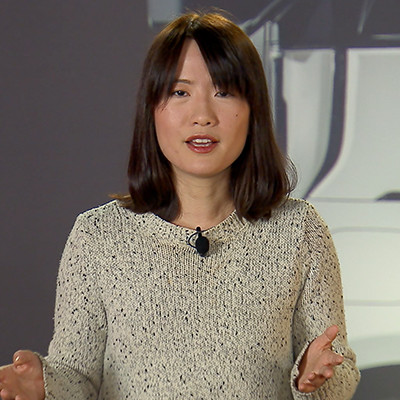
Building the Most Advanced AV

Accelerating AV Development
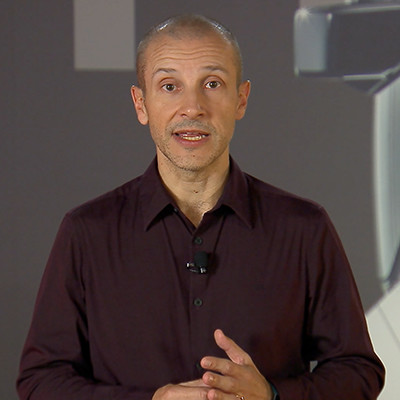
Creating the AV Ecosystem
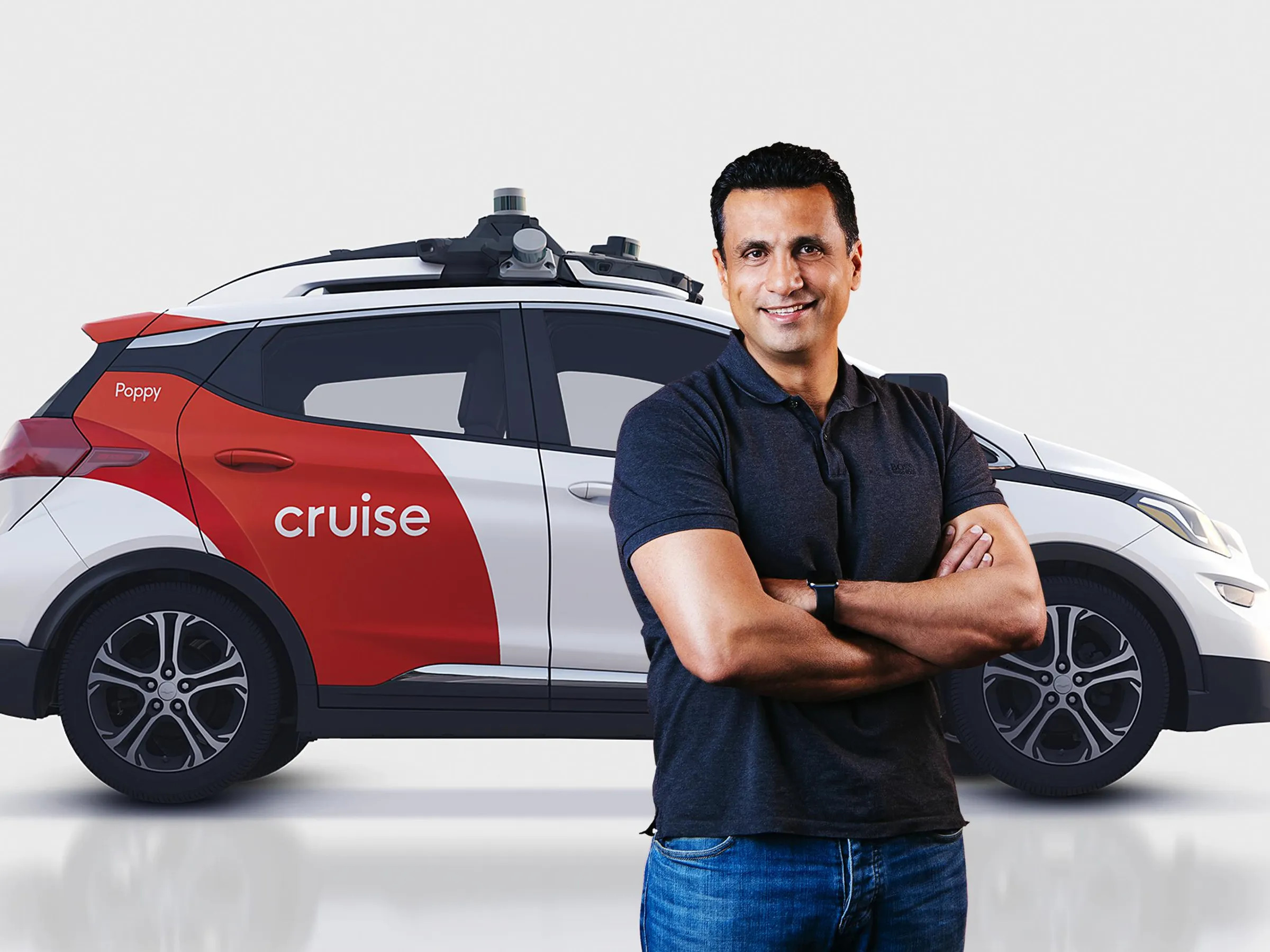
Mon Jul 11 2022
IEEE Spectrum: What’s the Tech Background of an Autonomous-Vehicle Engineer?
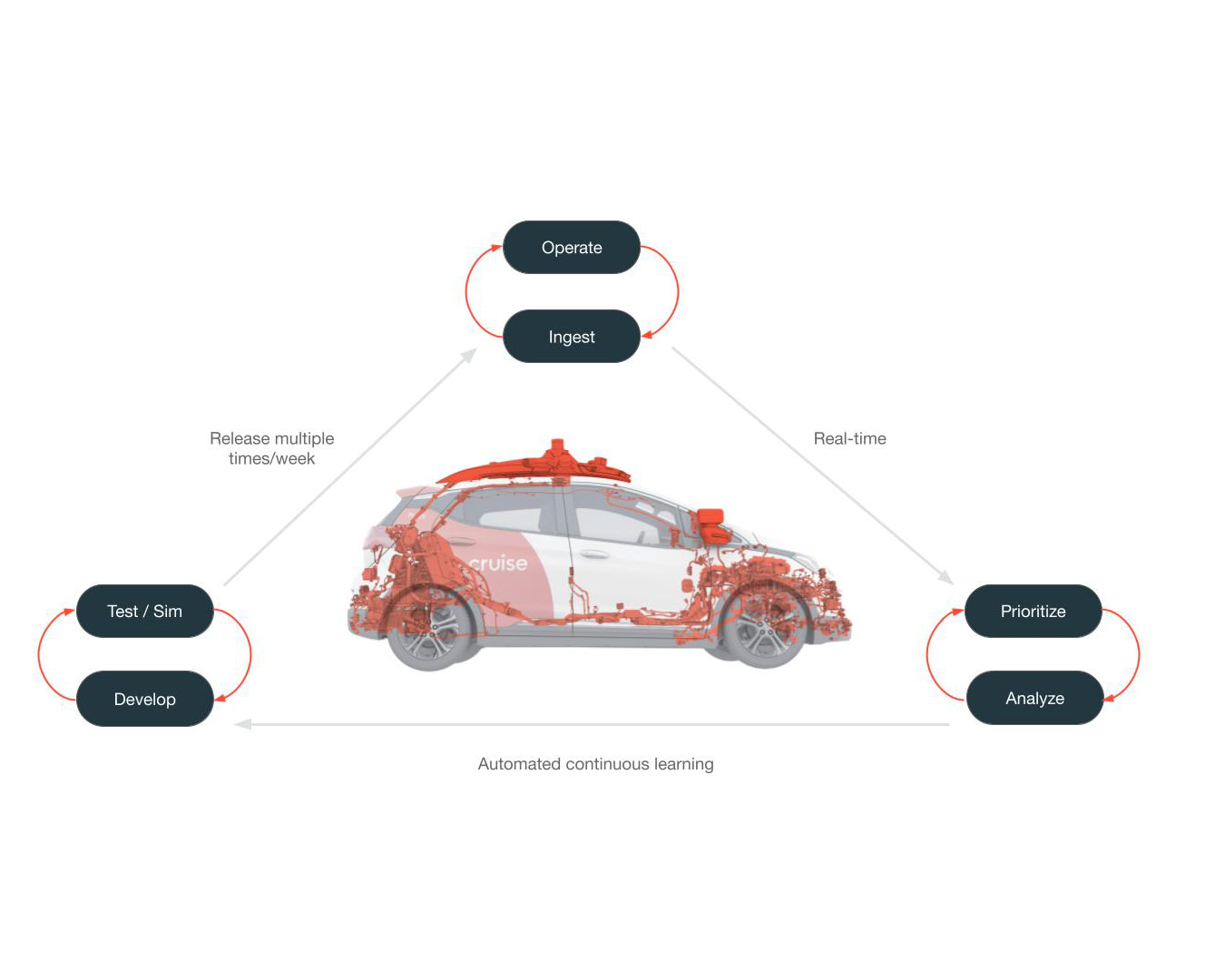
Tue Mar 08 2022
Building Continuous Integration & Continuous Delivery for Autonomous Vehicles on Google Cloud

Thu Mar 03 2022
The Robot Report: Cruise’s VP of robotics on SF robotaxi operations
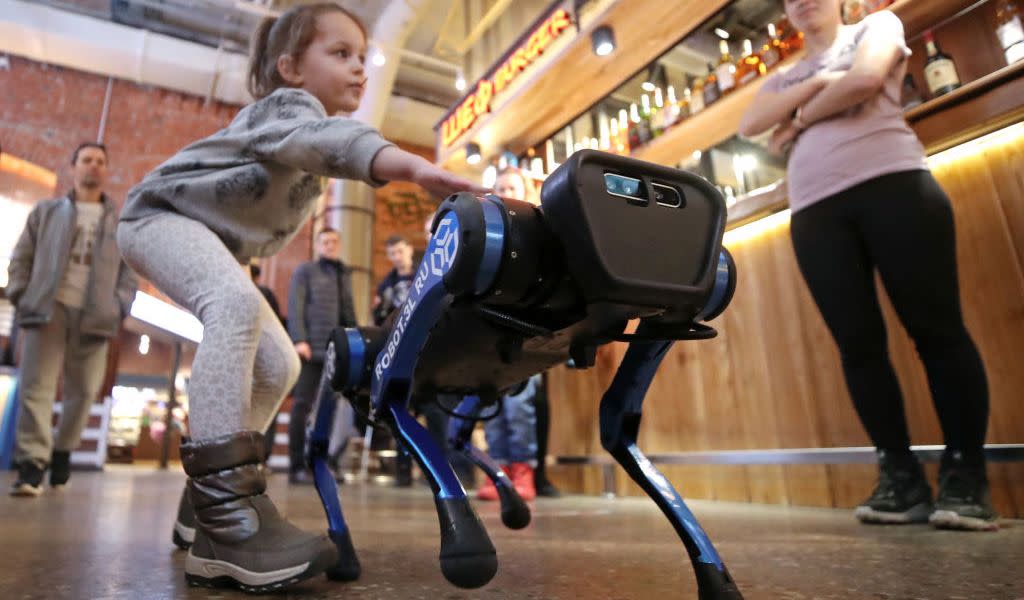
Sun Jul 04 2021
VentureBeat: The lessons we learn from self-driving will drive our robotics future
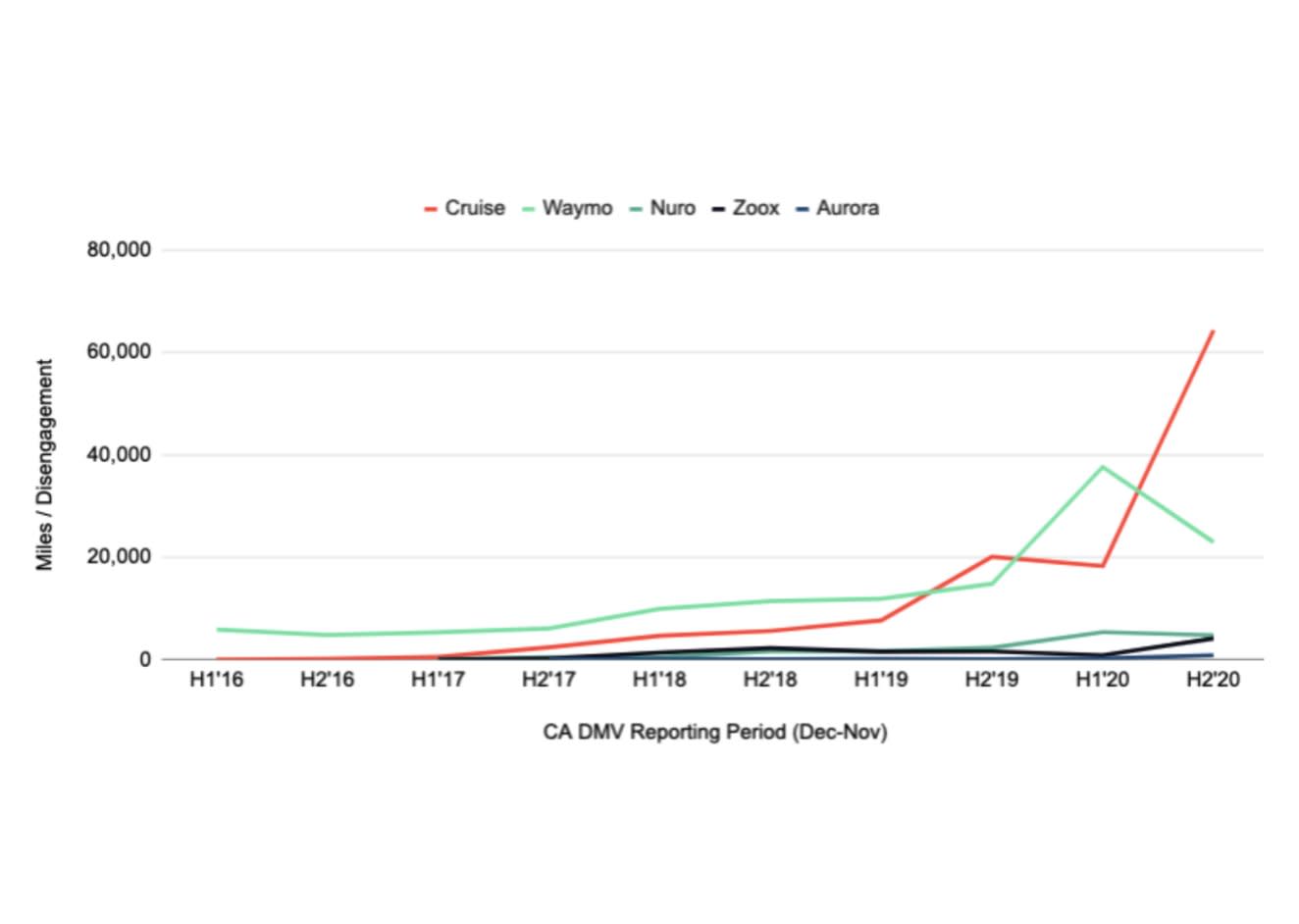
Tue Feb 09 2021
@kvogt 🧵 Annual DMV report and how our ongoing SW updates help improve AV performance

Wed Sep 30 2020
How Cruise Uses Simulation To Speed Up Our Sensor Development

IMAGES
COMMENTS
The Cruise Origin driverless car is roughly the same size as a traditional crossover utility vehicle, with a boxy body and two-tone color scheme. Ingress is achieved via an exterior-mounted keypad ...
Cruise revealed the Origin as a 'production ready' driverless vehicle meant for carpooling. The vehicle is fully autonomous and shall operate as a taxi service in the city and can also drive on the highway. Origin is the result of Cruise's partnership with parent firm GM and investor Honda.Featuring a boxy design, the Cruise origin has no control module inside.
The design was revealed to media this week during an event in San Francisco, with Cruise showing off a white-black-orange color scheme and a large interior that boasts room for six human riders.
On January 21st, we introduced the Cruise Origin. Self-Driven. All-Electric. Shared. It's not a product you buy. It's an experience you share. Watch its debu...
The Cruise Origin is a fully electric and driverless shuttle that has a boxy and upright shape that maximizes the interior space for passengers and minimizes the exterior footprint for city traffic. It has no steering wheel, pedals or driver seat, but instead features two bench seats that face inward for up to four passengers. ...
Jan 21, 2020, 5:14 PM PST. The not-a-car sits on the gleaming black stage surrounded by a halo of light. It's orange and black and white, and roughly the same size as a crossover SUV, but ...
The Cruise Origin interior. Cruise. US law allows companies to seek temporary exemptions from safety rules to deploy up to 2,500 vehicles.
The Cruise Origin was unveiled at the company's "Moving beyond the Car" event in San Francisco. It'll hold four passengers with plenty of legroom. The doors open like the back doors of a minivan ...
8. photos. During the launch of the Cruise Origin driverless car, GM's Cruise declared driving as we know it—and ride-sharing as we know it—obsolete. "This is the end of the human-driven ...
June 15, 2021 at 16:30. 5. The Cruise Origin is inching closer to reality as CEO Dan Ammann has revealed he's been spending time at GM's Pre-Production Operations center, where a team has ...
Supposedly what the Cruise Origin promises can go far beyond today's public transit. Cruise says the driverless vehicle will be summoned via their app 24/7 and offer a safe, consistent, reliable ...
The Cruise Origin interior rendering // Courtesy of GM/Cruise. D esigning the cabin of a fully autonomous vehicle poses a different challenge than a conventional car or truck interior. Think about it: With no driver, no steering wheel or pedals, and no need for awareness of what's going on outside, its occupants will be able to sit wherever they want.
Dan Ammann, Cruise's CEO, estimates vehicles like Origin will last up to 1,000,000 miles, run day and night, and save the average San Franciscan up to $5,000 a year. Design. The Cruise Origin prototype and production vehicle Cruise's black and orange shuttle service vehicle features a spacious gray interior with six passenger seats.
The Origin has multiple sensor arrays, is designed to operate 24/7, and could last for 1 million miles. The design features multiple screens and a pair of facing bench seats, with seating for six ...
Cruise. The future of the auto industry isn't horsepower or style when it comes to autonomous vehicles and ride-sharing services. It's a box. The most recent proof of this came Tuesday night ...
The Cruise Origin is a self-driving vehicle with no driver's seat or steering wheel. It features a vast cabin space that can be as private as a personally-owned vehicle and that allows 6 people to ride simultaneously, facing-to-face. This driverless ridehail service will offer an entirely new kind of mobility experience in Japan and target a ...
The Cruise Origin, a self-driving vehicle with no steering wheel or pedals, purpose built for a driverless ridehail service, represents the unprecedented mobility of the future. Since the interior space of this vehicle with seating for six passengers facing each other can be completely private, the users can use their travel time more freely ...
The interior is roomy, with seats that face each other, similar to what a traveler might find on some trains. ... Splashy looks aside, the Origin is meant to show Cruise's muscle and intent to ...
The interior of the Cruise Origin autonomous vehicle is seen during the Japan Mobility Show at Tokyo Big Sight in Tokyo, Japan on October 26, 2023. ...
Cruise envisions the Origin having a lifespan of a million miles thanks to easily swappable components and intends it to serve as an autonomous, ride-sharing taxi rather than a private vehicle for ...
Cruise vehicles consider multiple paths per second, constantly choosing the best ones for unexpected events and changes in road conditions. Cruise 101. Cruise vehicles tell their wheels and other controls how to move along the selected path and react to changes in it. The result is a ride that's safe, efficient, and natural-looking to other ...
Another option for more customized cruise cabin decor is to browse Etsy, an online marketplace where you can find lots of handmade items, ranging from t-shirts to cabin door decorations. Under the "cruise cabin decor" search, you can filter by cruise line, material, color, theme, and more. Plus, you can indicate if you want decor that's ...